Nvidia RTX 40-series Super models revealed — 4070 Super coming Jan 17 at $599
RTX 4070 Ti Super 16GB on Jan 24 at $799 and RTX 4080 Super 16GB on Jan 31 at $999.
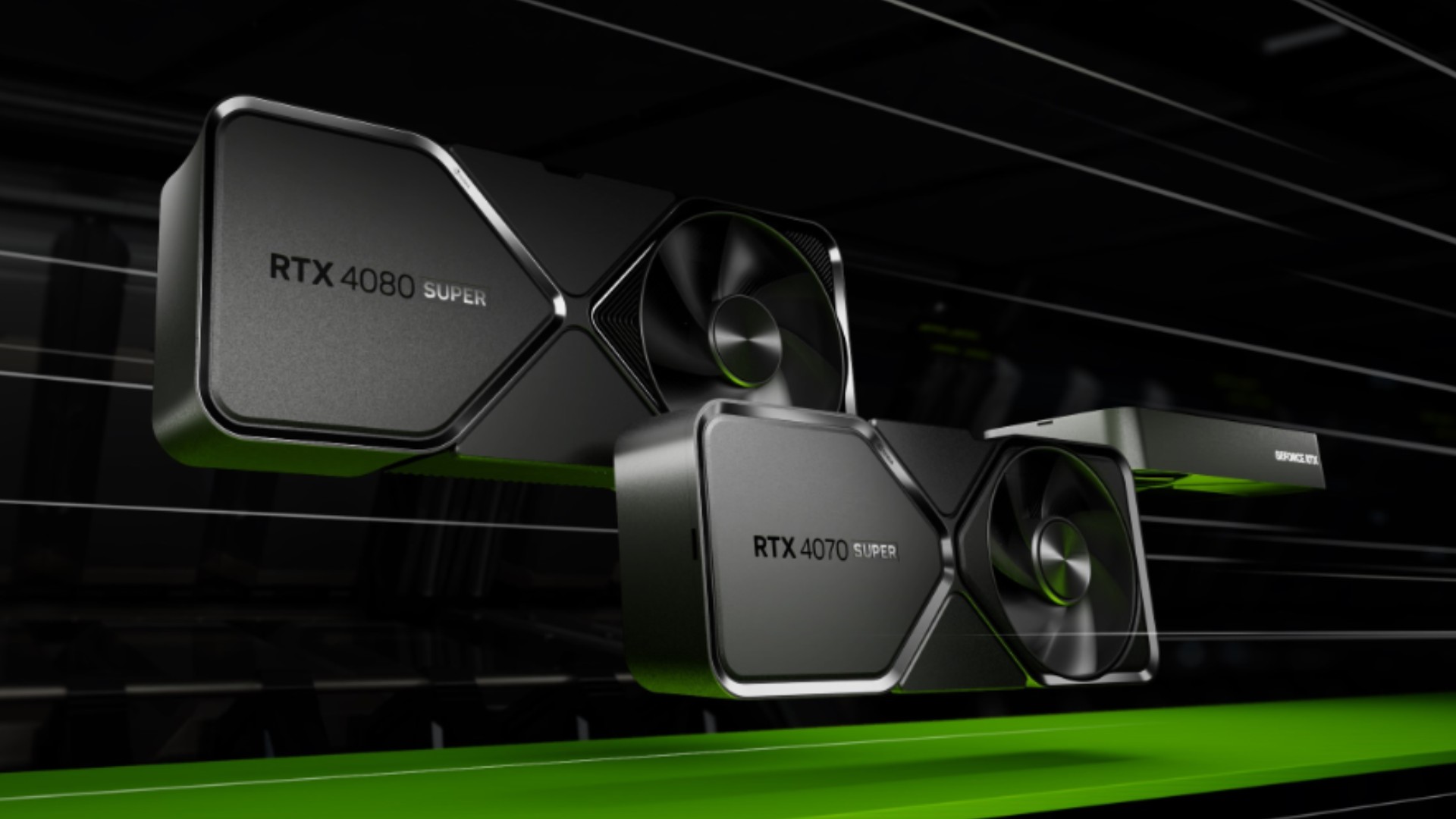
The Nvidia RTX 4070 Super, RTX 4070 Ti Super, and RTX 4080 Super officially broke cover today, months after the first leaks and rumors started circulating. To the surprise of virtually no one, the new GPUs offer a decent bump in performance over the existing non-Super counterparts, and will compete with the best graphics cards starting later this month.
Nvidia will be launch the cards in reverse order of performance, so the 4070 Super comes first with the 4080 Super as the caboose — and not coincidentally, that’s also the roughly the order of excitement we have for the three new models as well.
Nvidia appears to be following the pattern of its RTX 20-series GPUs from 2018/2019 with the RTX 40-series, with a few minor tweaks to the formula. At launch, just like the 20-series, most of the RTX 40-series GPUs were criticized for offering a relatively small bump in performance at higher price points than their predecessors. Another major complaint was with VRAM capacities and memory interface widths. That at least is one aspect that will change slightly with the RTX 40-series Super models.
Let’s go ahead and hit the speeds and feeds. Nvidia hasn’t provided exact specifications for the three new parts, but based off the performance figures and what we do know, we’ve filled in a few blanks — these approximations are indicated by the tilde (~) symbol before the clock speeds and core counts. We’re relatively certain on the specs, though it’s possible we could see a +/- 2 SM change on some of the parts.
| Graphics Card | RTX 4070 Super | RTX 4070 | RTX 4070 Ti Super | RTX 4070 Ti | RTX 4080 Super | RTX 4080 |
|---|---|---|---|---|---|---|
| Architecture | AD104 | AD104 | AD103 | AD104 | AD103 | AD103 |
| Process Technology | TSMC 4N | TSMC 4N | TSMC 4N | TSMC 4N | TSMC 4N | TSMC 4N |
| Transistors (Billion) | 32 | 32 | 45.9 | 35.8 | 45.9 | 45.9 |
| Die size (mm^2) | 294.5 | 294.5 | 378.6 | 294.5 | 378.6 | 378.6 |
| SMs | ~56 | 46 | ~66 | 60 | ~80 | 76 |
| GPU Cores (Shaders) | ~7168 | 5888 | ~8448 | 7680 | ~10240 | 9728 |
| Tensor / AI Cores | ~224 | 184 | ~264 | 240 | ~320 | 304 |
| Ray Tracing Cores | ~56 | 46 | ~66 | 60 | ~80 | 76 |
| Boost Clock (MHz) | ~2480 | 2475 | ~2610 | 2610 | ~2550 | 2505 |
| VRAM Speed (Gbps) | 21 | 21 | 21 | 21 | 23 | 22.4 |
| VRAM (GB) | 12 | 12 | 16 | 12 | 16 | 16 |
| VRAM Bus Width | 192 | 192 | 256 | 192 | 256 | 256 |
| L2 Cache | 48 | 36 | 48 | 48 | 64 | 64 |
| Render Output Units | 80 | 64 | 96 | 80 | 112 | 112 |
| Texture Mapping Units | ~224 | 184 | ~264 | 240 | ~320 | 304 |
| TFLOPS FP32 (Boost) | 36 | 29.1 | 44 | 40.1 | 52 | 48.7 |
| TFLOPS FP16 (FP8) | 284 (568) | 233 (466) | 353 (706) | 321 (641) | 418 (836) | 390 (780) |
| Bandwidth (GBps) | 504 | 504 | 672 | 504 | 736 | 717 |
| TDP (watts) | 220 | 200 | 285 | 285 | 320 | 320 |
| Launch Date | Jan 2024 | Apr 2023 | Jan 2024 | Jan 2023 | Jan 2024 | Nov 2022 |
| Launch Price | $599 | $599 | $799 | $799 | $999 | $1,199 |
| Online Price | — | $535 | — | $740 | — | $1,160 |
Nvidia GeForce RTX 4070 Super
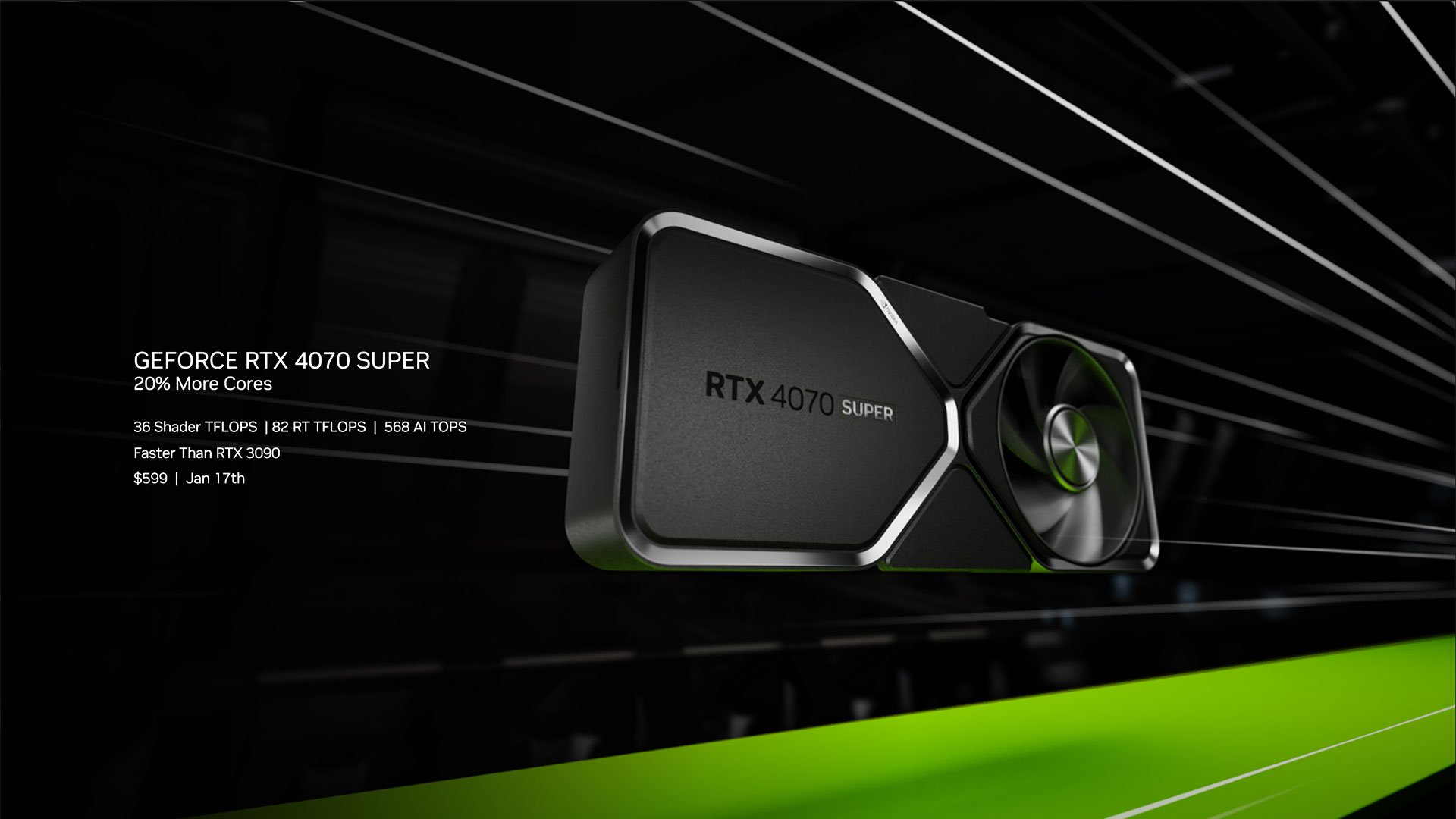

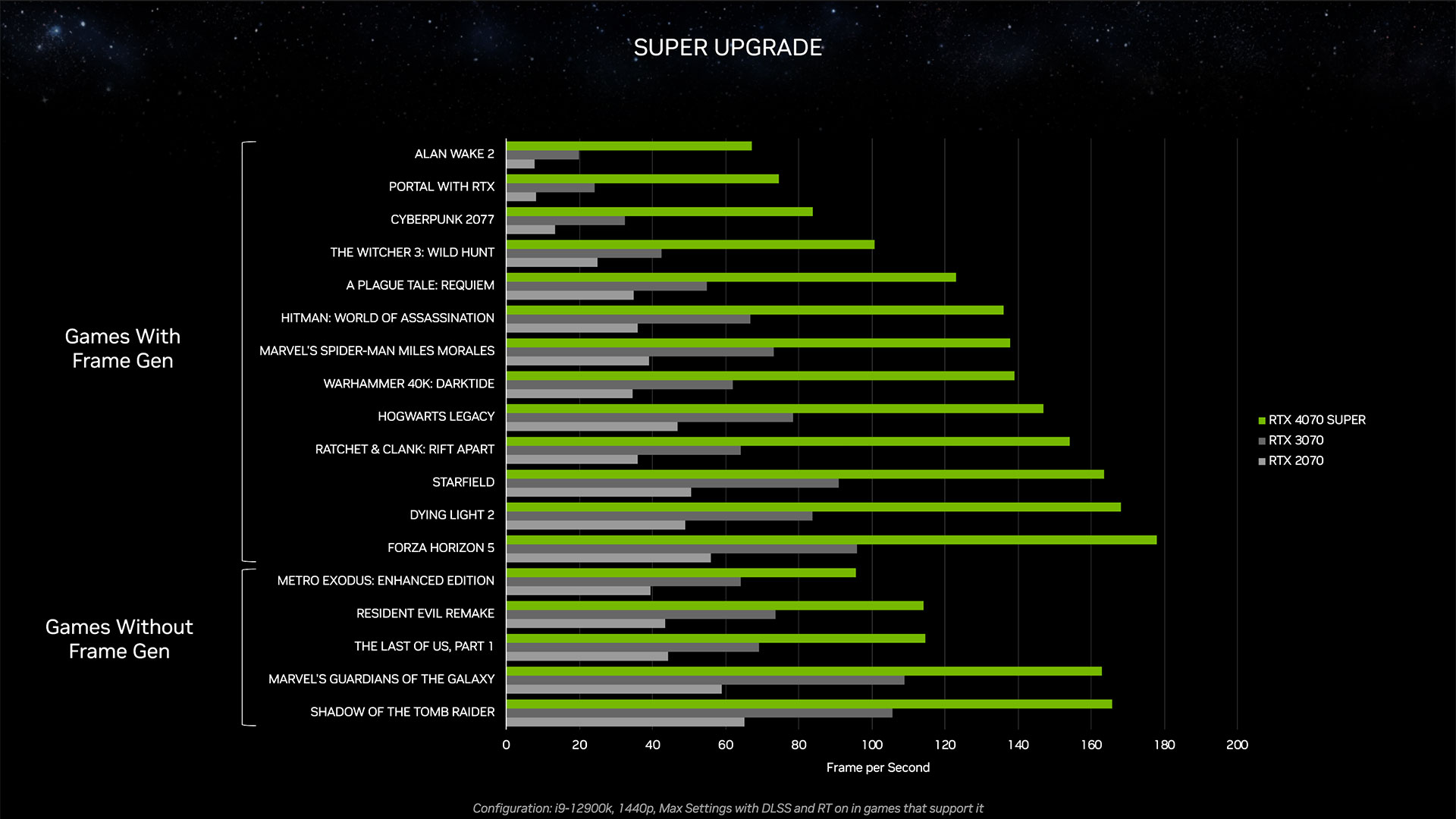

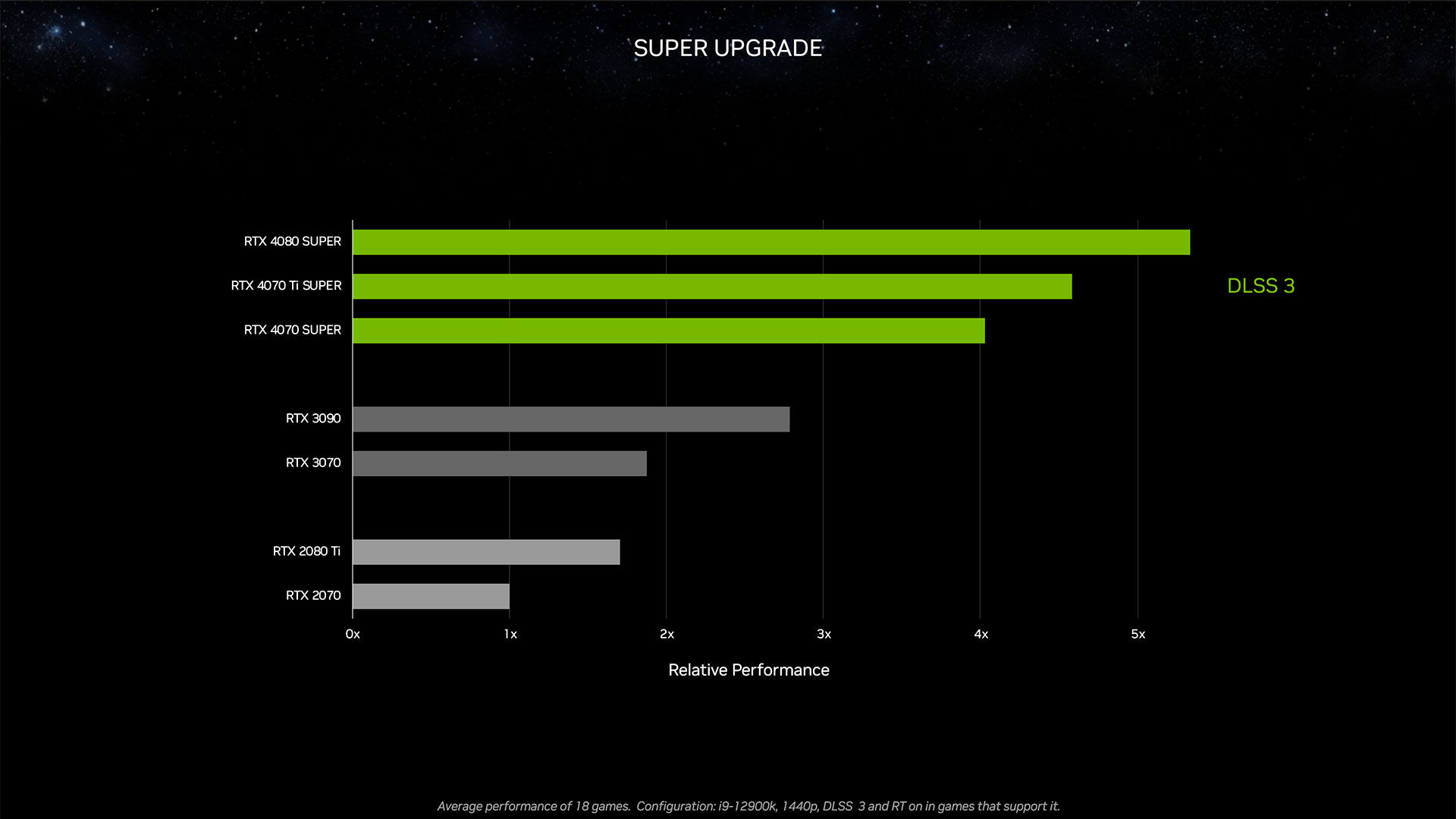
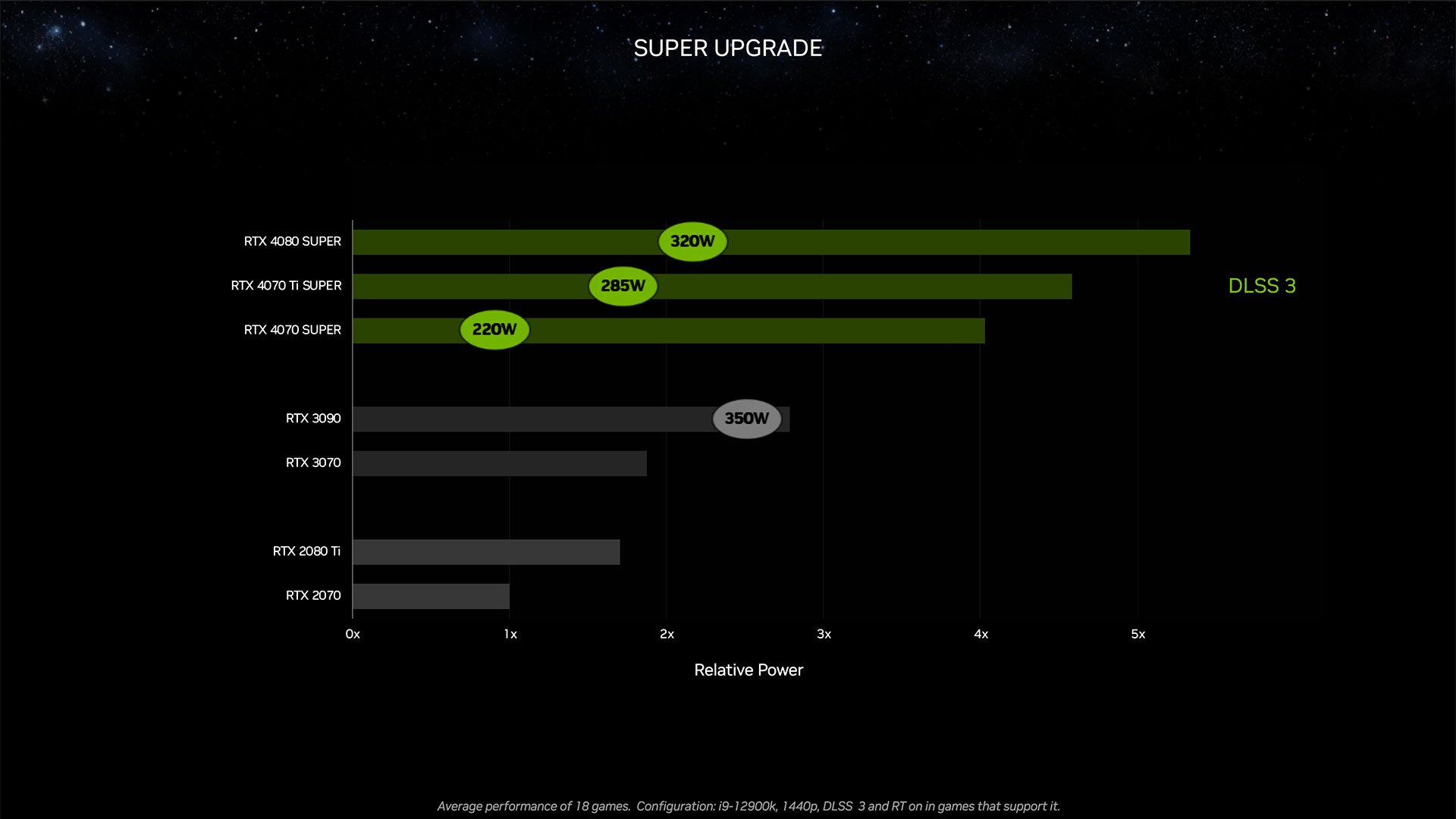
Let’s start with the RTX 4070 Super, which will use the AD104 GPU once more. The new GPU offers up 36 of FP32 shader teraflops, and 568 FP8 (with sparsity) AI teraflops. Those are important qualifications, as currently there are a lot of AI workloads that don’t leverage the FP8 format and/or sparsity, and turning off each of those cuts the theoretical performance in half — meaning for generic FP16 workloads running on the tensor cores, it has 142 teraflops of compute. We expect the reference 4070 Super to come with 56 Streaming Multiprocessors (SMs), giving it 7168 CUDA cores.
The memory interface will remain 192-bit, with the same 21 Gbps GDDR6X chips as the RTX 4070 and 4070 Super. That gives it the same 504 GB/s of bandwidth as the existing parts, with 22% more compute performance than the vanilla RTX 4070 and 11% less compute performance than the RTX 4070 Ti. It will come with the full 48MB of L2 cache as well (Nvidia's slide incorrectly states 36MB, we were told.)
Keep in mind that the official boost clock of around 2.48 GHz will likely be very conservative — our testing of previous RTX 40-series GPUs show most will run at 2.7–2.8 GHz — so it’s possible and even likely that the 4070 Super will land a lot closer to the 4070 Ti than the raw specs indicate. TGP gets a slight bump to 220W as well, which again should give it some legroom over the base 4070 but keeps it far behind the 4070 Ti’s 285W TGP.
With the bump in performance, Nvidia says the RTX 4070 Super will slightly outperform the previous generation RTX 3090, even if you don’t factor in DLSS 3 frame generation. We suspect it will largely depend on the games you play, or the games we use for testing, but the 4070 Ti was slightly faster than the 3090 so the numbers look about right.
Nvidia will be making an RTX 4070 Super Founders Edition card, which appears virtually identical in design to the RTX 4070 Founders Edition, other than a change in the color and casing of the shroud. The new 4070 Super comes dressed in stealthy black, and there’s no indication it will have any RGB lighting. That again echoes what we saw with the RTX 4070 and 4060 Ti Founders Edition cards.
The RTX 4070 Super will launch on January 17, with an MSRP of $599, taking over the price point of the RTX 4070. To make room for the newcomer, the RTX 4070 MSRP will drop to $549, which doesn’t seem like quite enough, and if you check current retail prices, you’ll see RTX 4070 cards already starting at $549 and sometimes less. We expect performance to land relatively close to the RTX 4070 Ti, which means you get a substantial improvement in bang for the buck, as the 4070 Ti MSRP currently sits at $799.
Nvidia GeForce RTX 4070 Ti Super
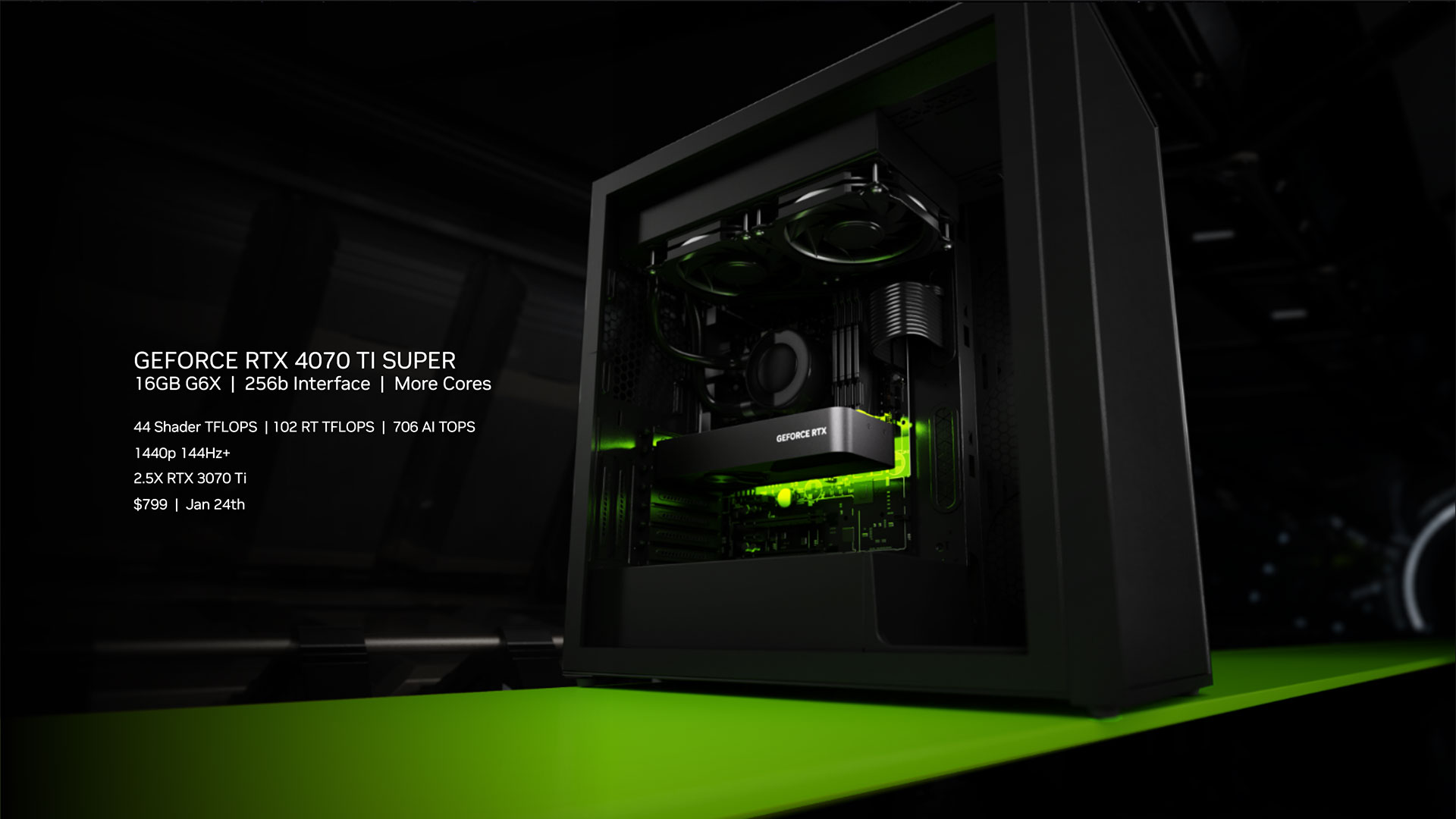

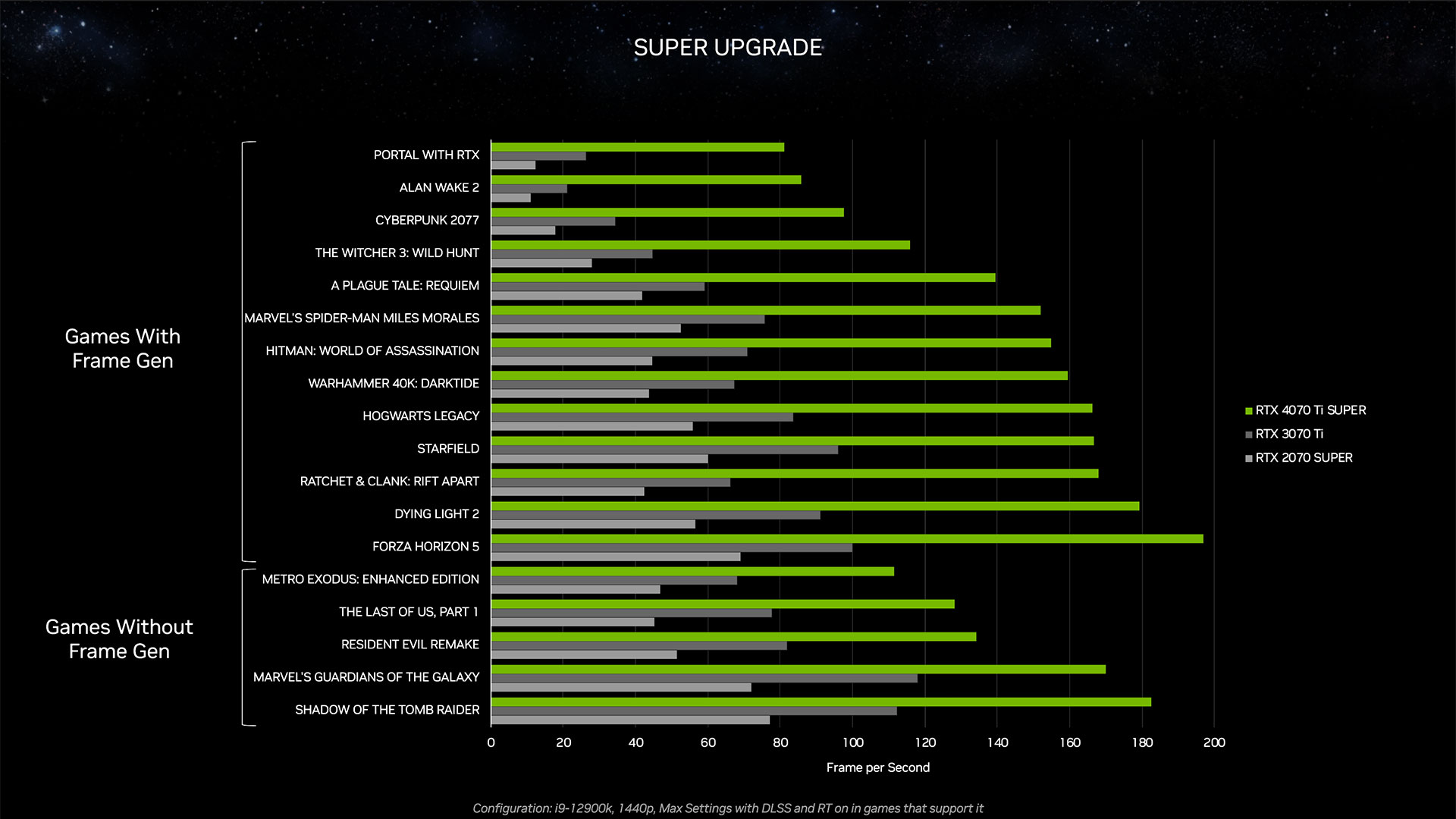
Moving on to the RTX 4070 Ti Super, things get a bit more interesting. Nvidia will use AD103 for the new GPU, opening the door for a 256-bit memory interface — a 33% improvement over the vanilla 4070 Ti. Given what we just discussed with the RTX 4070 Super, it’s no surprise that Nvidia indicates it will phase out the existing RTX 4070 Ti in favor of the new model, which will inherit the $799 MSRP price point. Where will fully enabled AD104 chips end up if the 4070 Ti goes away? Simple: They’re used in the mobile RTX 4080 as well as certain professional cards like the RTX 4000 Ada Generation.
Exact specifications have not been confirmed by Nvidia, but we do anticipate the 4070 Ti Super will have 66 SMs and 8448 CUDA cores, a 10% increase over the 4070 Ti. If we’re correct, that means the new GPU will have the same 2.61 GHz boost clock as the 4070 Ti, giving it 44 teraflops of FP32 shader performance and 706 teraflops of FP8 throughput — and the same 706 teraops of INT8 performance, if you’re wondering. TGP remains the same as the existing 4070 Ti at 285W.
The big change will be the memory bandwidth and capacity. Now Nvidia will have a 16GB card with a 256-bit interface and 672 GB/s of bandwidth (still 21 Gbps GDDR6X). That should make the 4070 Ti Super relatively competitive with AMD’s RX 7900 XT, and clearly ahead of the RX 7800 XT. In fact, the RTX 4070 Ti Super could land very close to the RX 7900 XTX in overall performance based on our existing test results — with the usual mix of superior ray tracing and AI performance, and slightly lower rasterization performance.
Nvidia does equip the 4070 Ti Super with 48MB of L2 cache — 6MB per 2GB memory channel, instead of the full 8MB per channel. This is clearly one small way to try and differentiate the 4070 Ti Super form the 4080/4080 Super. What we've seen with previous testing of RTX 40-series cards is that you get diminishing returns with larger L2 caches, so overall this likely only makes a few percent difference between the various AD103-based cards.
You can check our GPU benchmarks hierarchy for the full rundown, but the RTX 4080 already matches the RTX 7900 XTX in rasterization performance (give or take a couple percent), and leads by up to 35% in ray tracing performance, with a 10–15 percent lead overall.
The RTX 4070 Ti Super looks like it will be about 10% slower than the RTX 4080 — or around 15% faster than the RTX 4070 Ti — which puts it right around the level of AMD’s top GPU, at a lower price (but with less VRAM). And Nvidia still has some extra features like DLSS support and its overall software and API ecosystem.
The RTX 4070 Ti Super is slated to launch one week after the RTX 4070 Super, on January 24. Unlike the other two Super cards, but just like the prior RTX 4070 Ti, there will only be third-party cards for the RTX 4070 Ti Super — so there will be no RTX 4070 Ti Super Founders Edition, probably because that’s just a few too many descriptors tacked onto the name.
Nvidia GeForce RTX 4080 Super
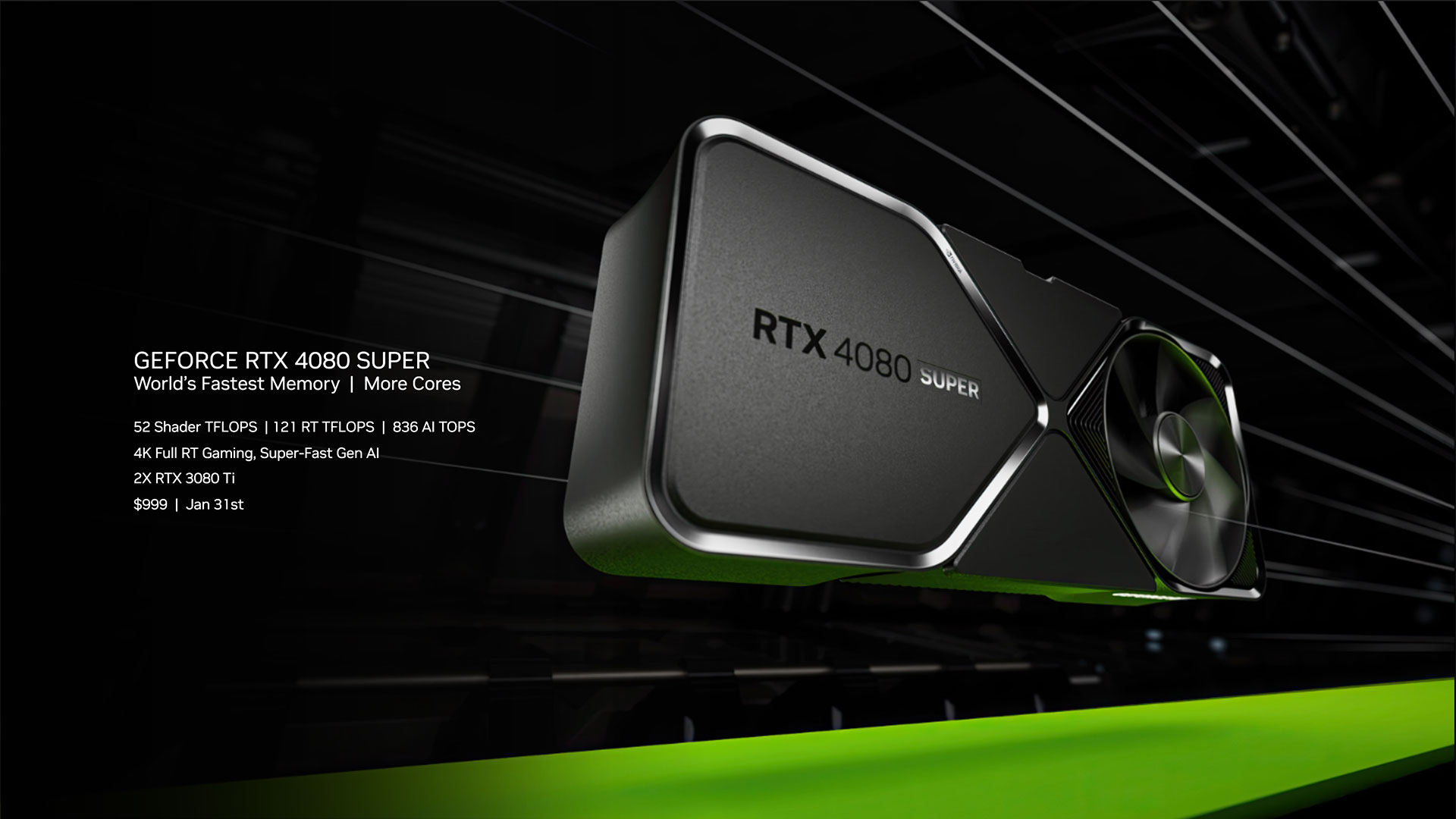

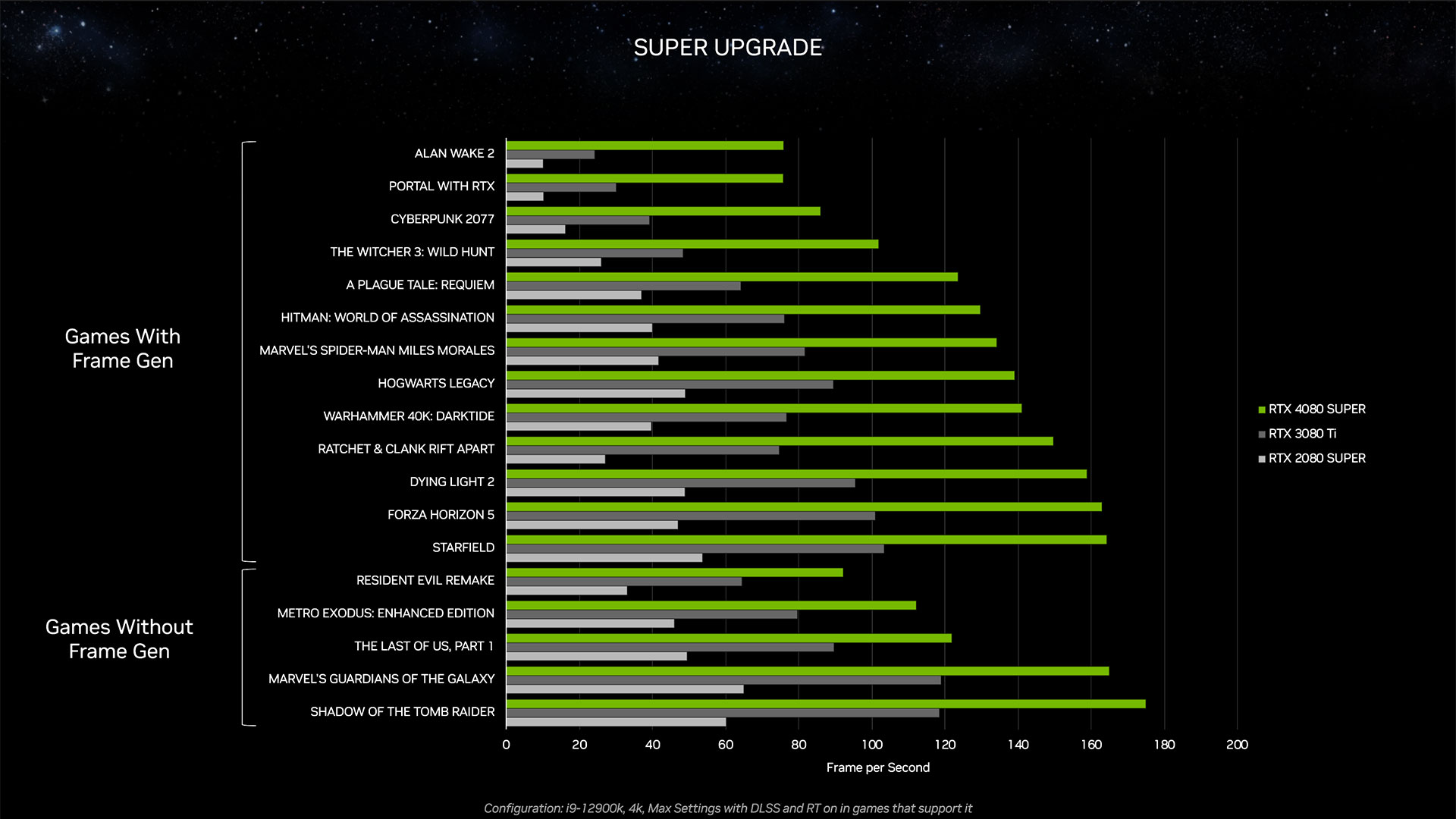
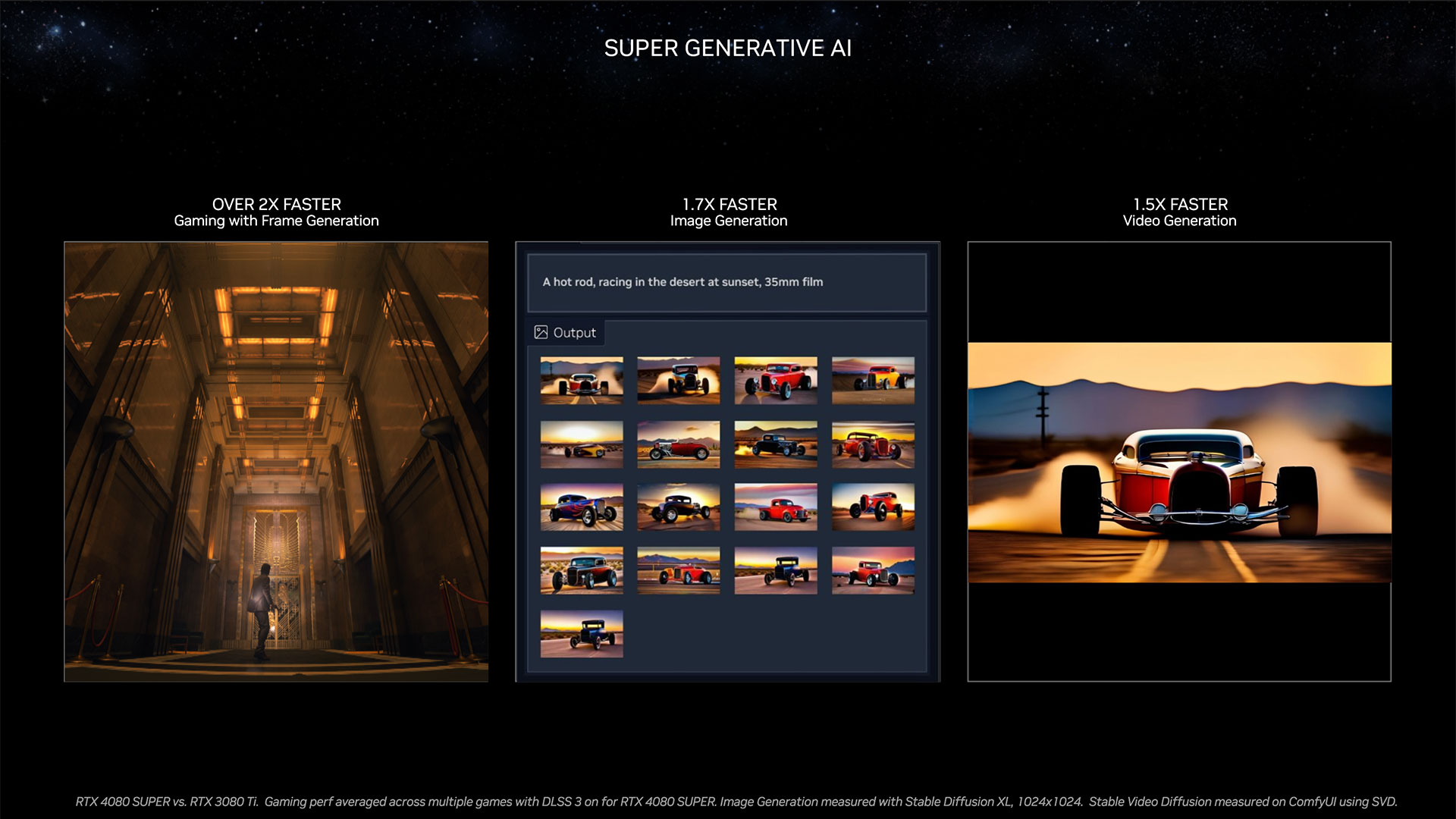
Wrapping things up, the RTX 4080 Super in many ways feels like the most disappointing refresh of the new cards. The RTX 4080 already used a nearly maxed out AD103 GPU with 76 SMs, and RTX 4080 Super will go whole hog and offer the full 80 SMs and 10240 CUDA cores. That’s only a 5% increase in core counts, if you’re keeping track, and AD103 means Nvidia is still stuck with a 256-bit memory interface and 16GB of VRAM — so my hopes for an RTX 4080 Super 20GB are dead and buried. Sigh.
Nvidia will give the RTX 4080 Super a slight bump in GDDR6X clocks, going from 22.4 Gbps on the vanilla 4080 to 23 Gbps on the 4080 Super. That’s also a pretty paltry 2.7% boost to bandwidth, which will hardly make any noticeable difference in most workloads. In fact, we suspect most third-party factory overclocked RTX 4080 cards will come very close to matching the RTX 4080 Super. The new GPU will also have the same 320W TGP as its predecessor.
The good news is that Nvidia is giving the RTX 4080 Super a much-needed price cut, and it will have a $999 MSRP, $200 less than the existing RTX 4080. As you can guess, that means the RTX 4080 will be phased out in favor of the new cards, though we could see a few short-term deals to clear out any remaining inventory. Or put another way: Don't pay more than about $899 for an RTX 4080 at this point.
Of course, no one is going to be looking at upgrading from an RTX 4080 to the RTX 4080 Super, so Nvidia provided performance comparisons with the existing RTX 3080 Ti and RTX 2080 Super. If you have the latter and skip a generation to upgrade to the 4080 Super, you should see more than a doubling of performance… along with a 43% increase in launch pricing, if you’re keeping score. You also get double the VRAM, and in AI workloads Nvidia says the 4080 Super outperforms the 3080 Ti by 50–70 percent.
The RTX 4080 Super will launch on January 31, one week after the RTX 4070 Ti Super.
Get Tom's Hardware's best news and in-depth reviews, straight to your inbox.
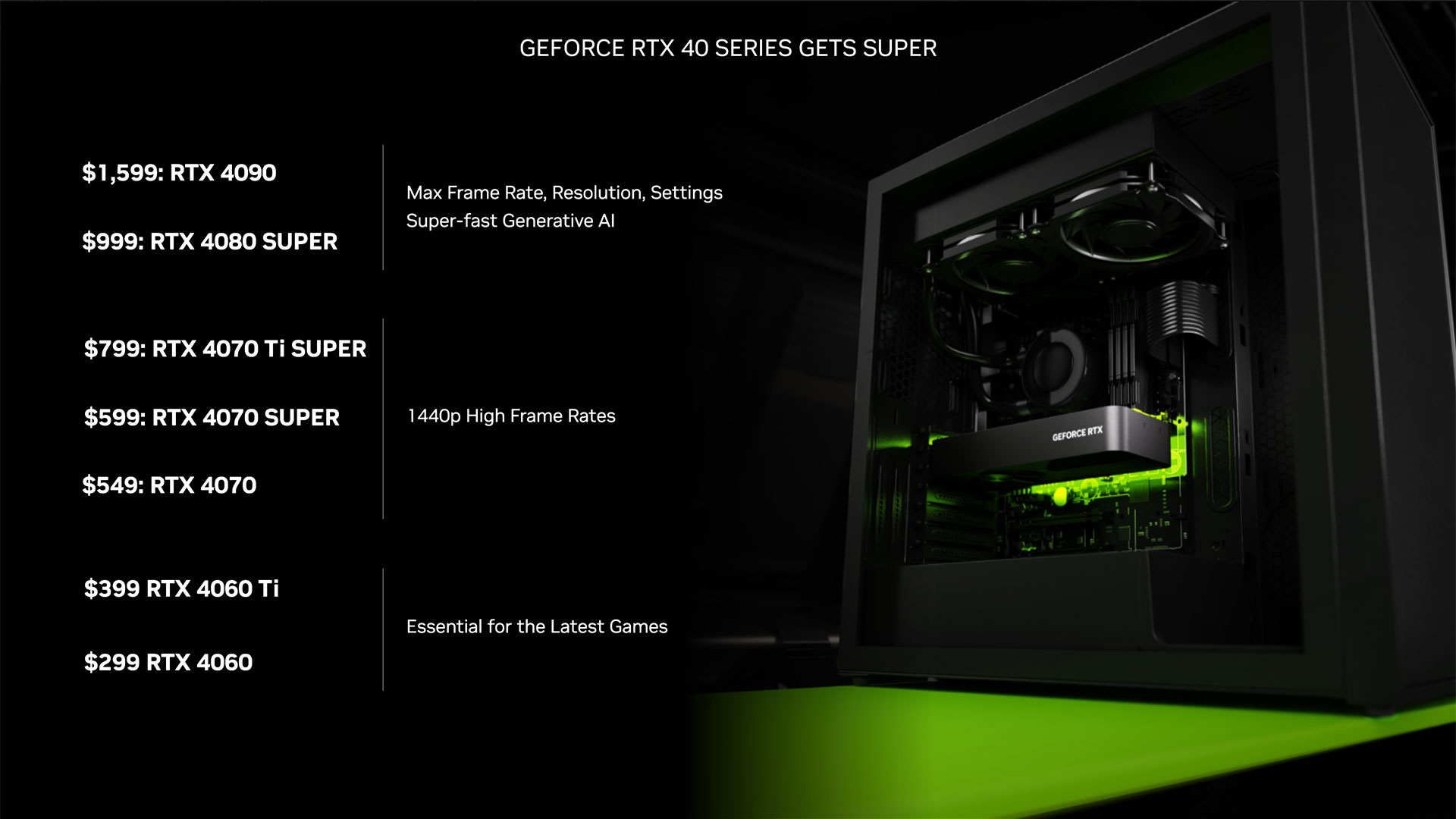
Once the three new cards launch, by the end of January, here’s what Nvidia’s RTX 40-series lineup will look like. Again, note that the RTX 4080 and RTX 4070 Ti vanilla cards will be phased out in favor of newer models. There’s no Super upgrade for the 4060 Ti and 4060, though in our view we could certainly see the RTX 4070 prices drop closer to the $499 mark, and that would be just as good as a hypothetical RTX 4060 Ti Super.
Besides the new RTX 40-series Super GPUs, Nvidia has some other announcements regarding GeForce Now, new RTX-enabled games, new AI technologies, and livestreaming updates. We'll cover those separately in a different article, though you can find the relevant slides in the full presentation deck that we’ve included below.
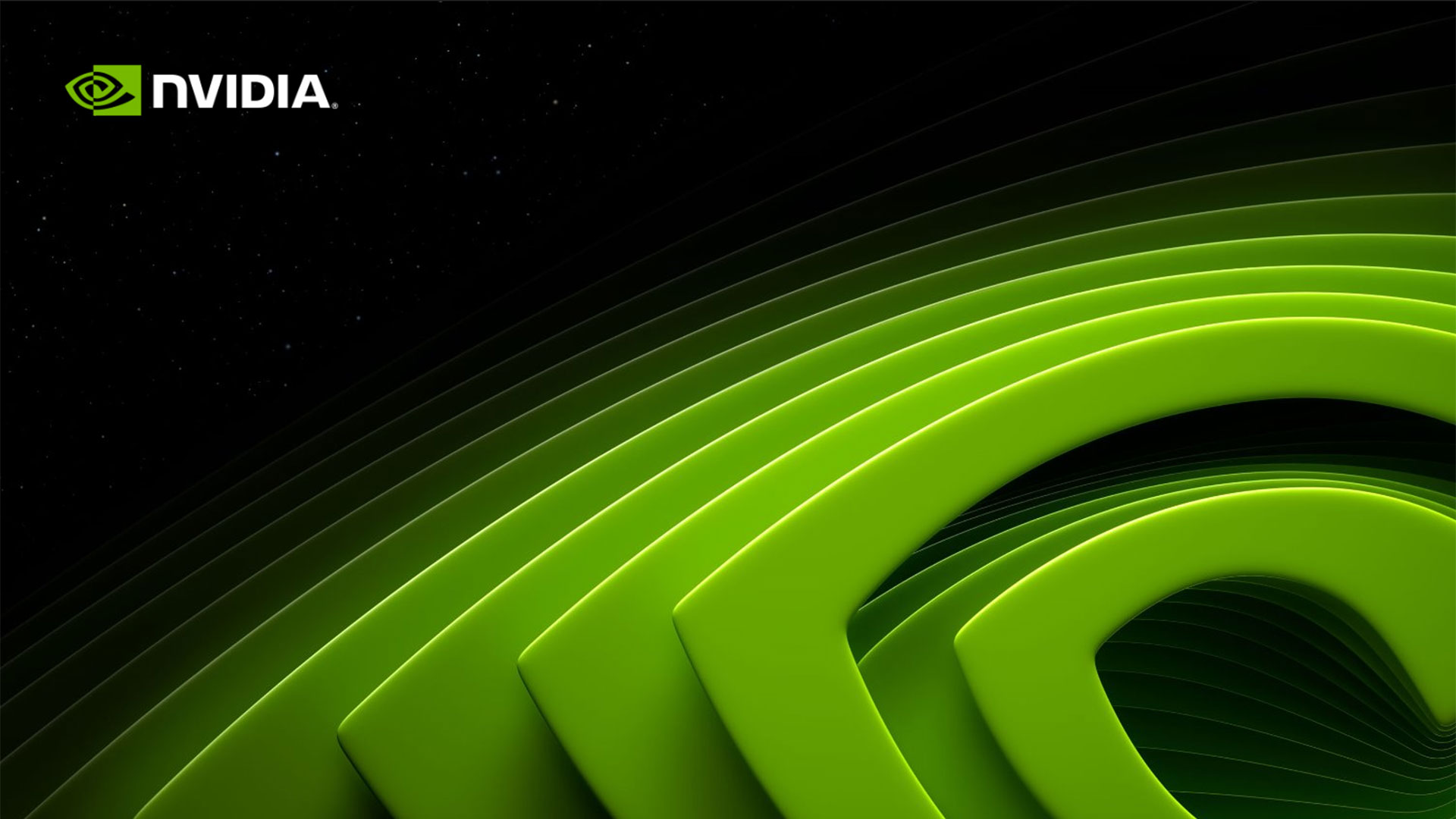

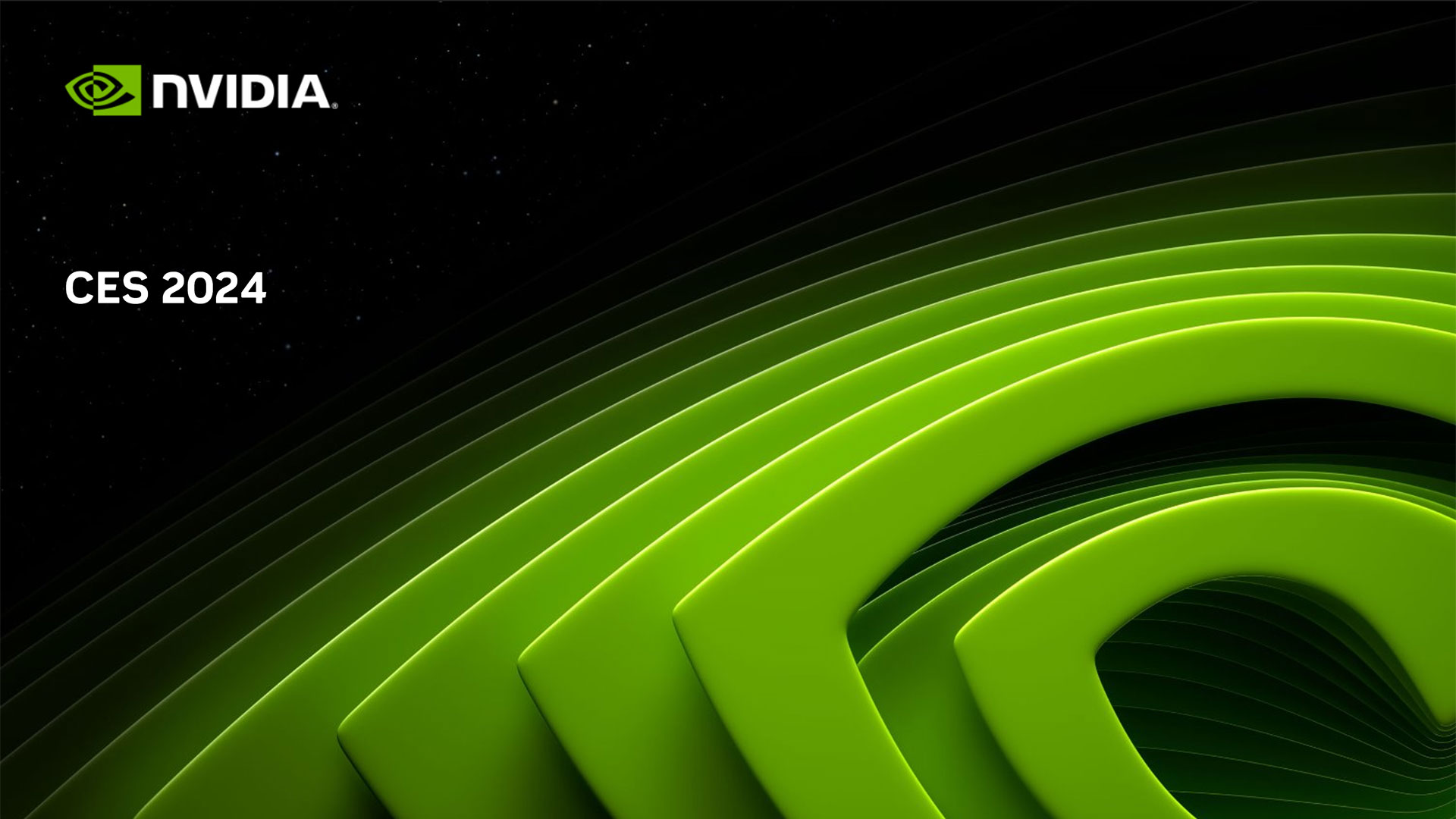
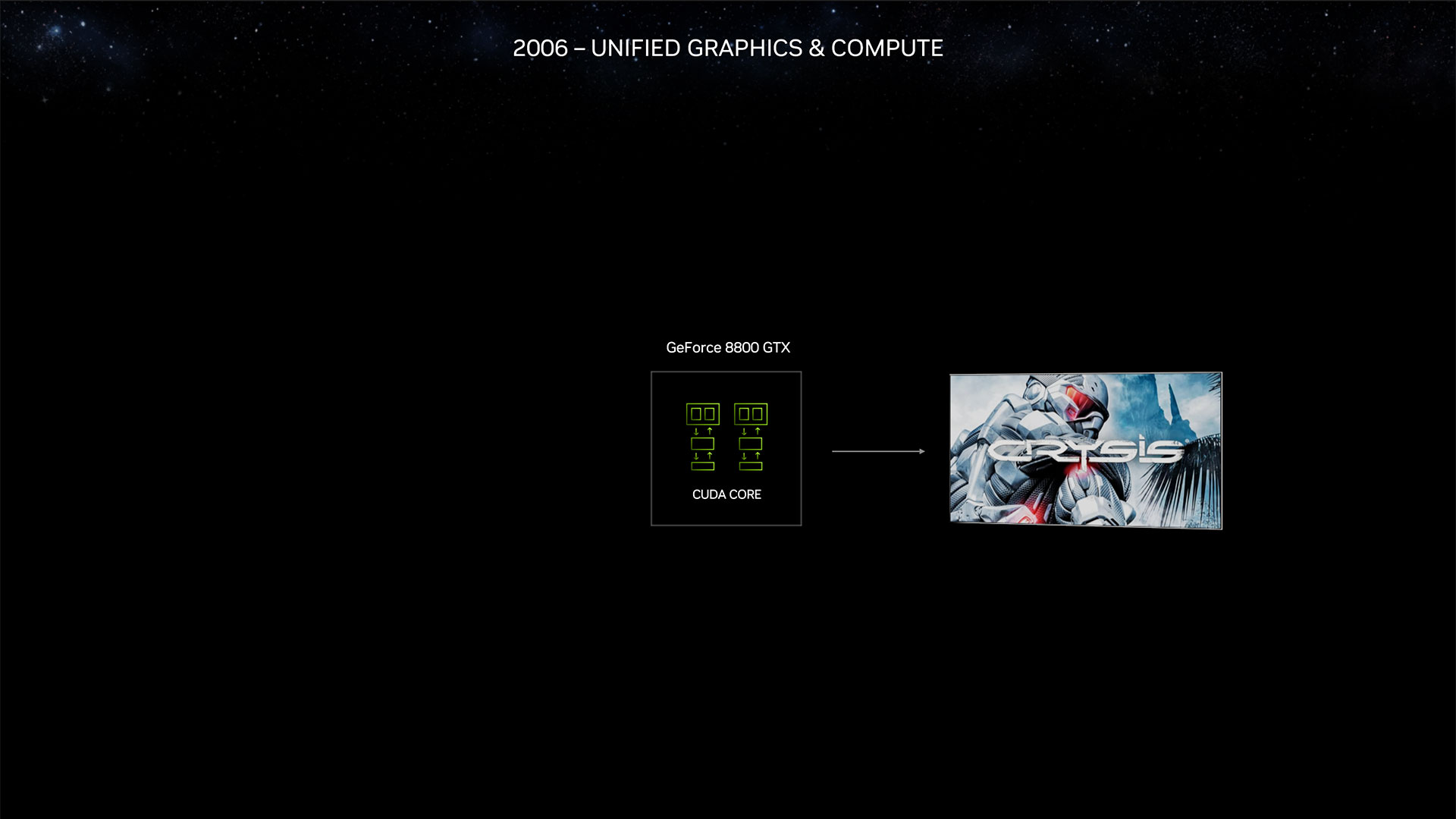
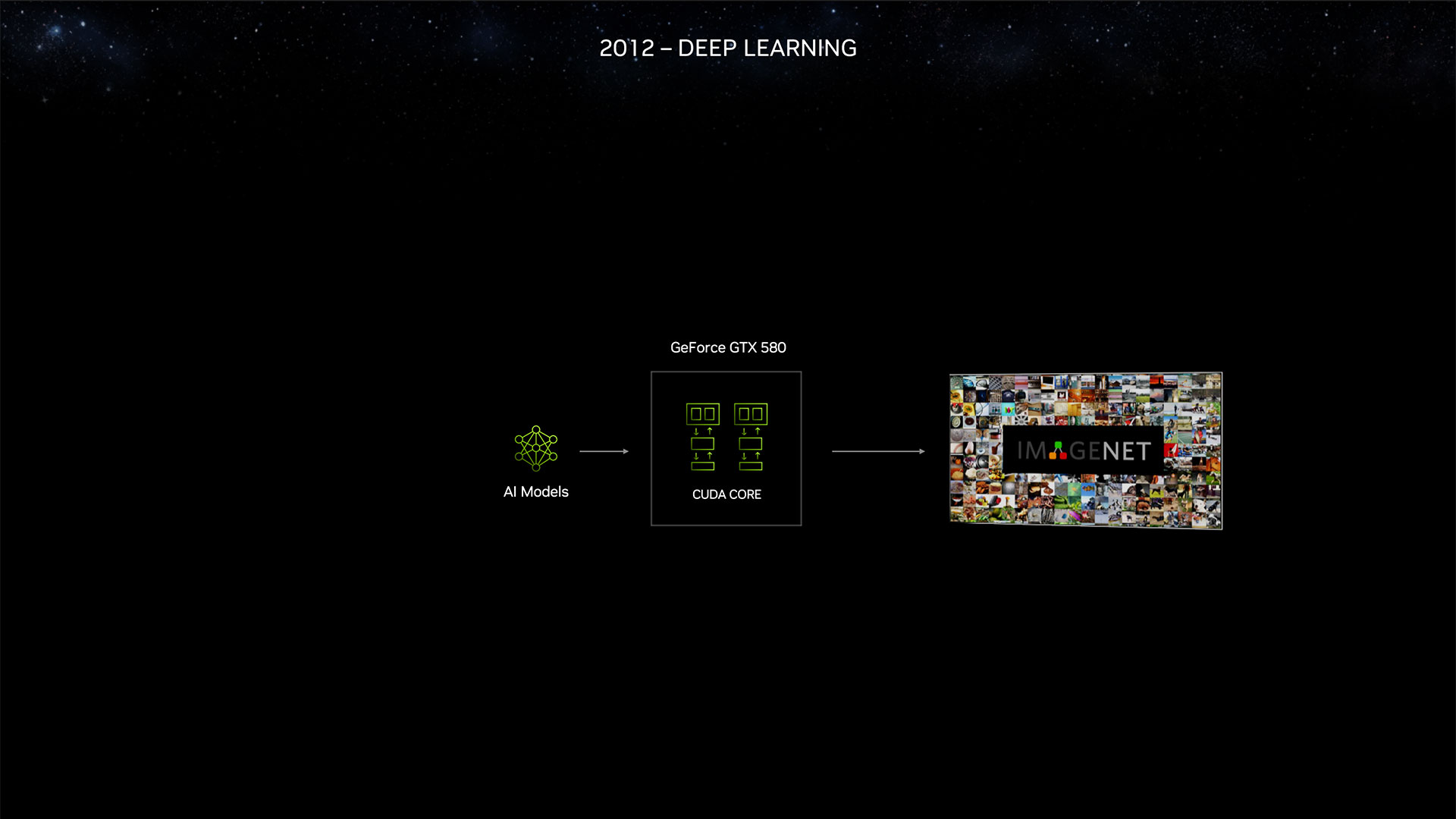
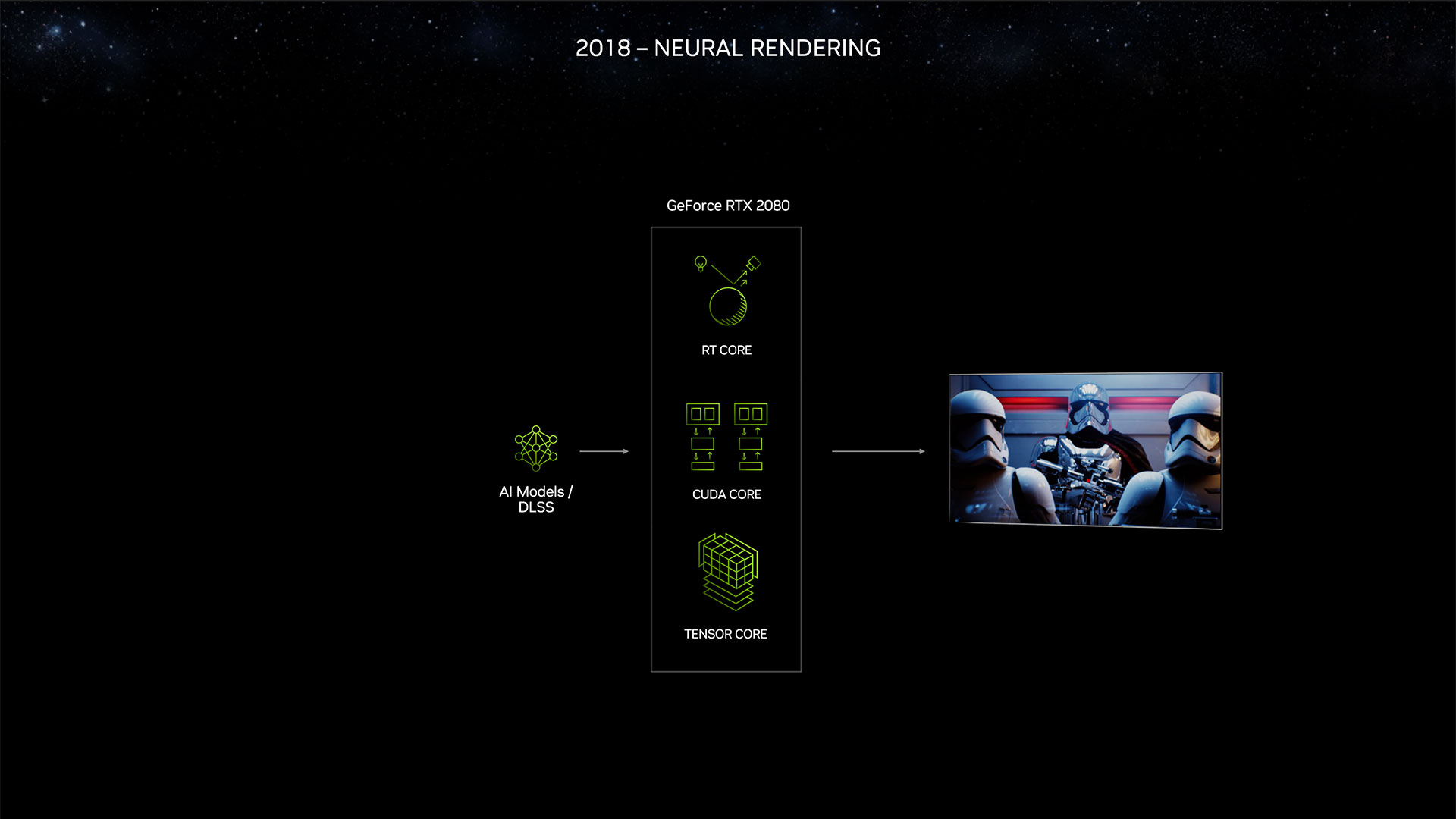

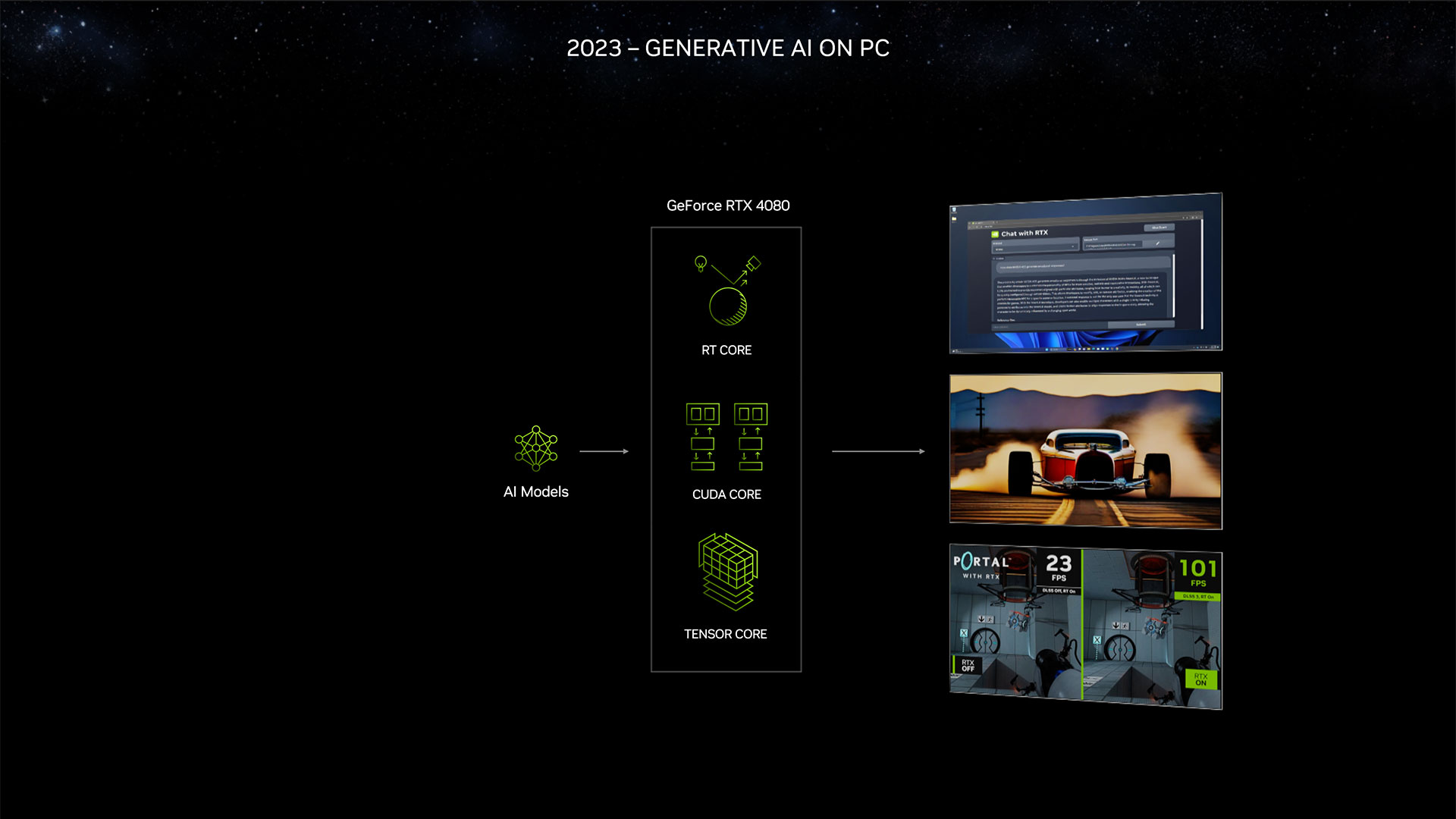
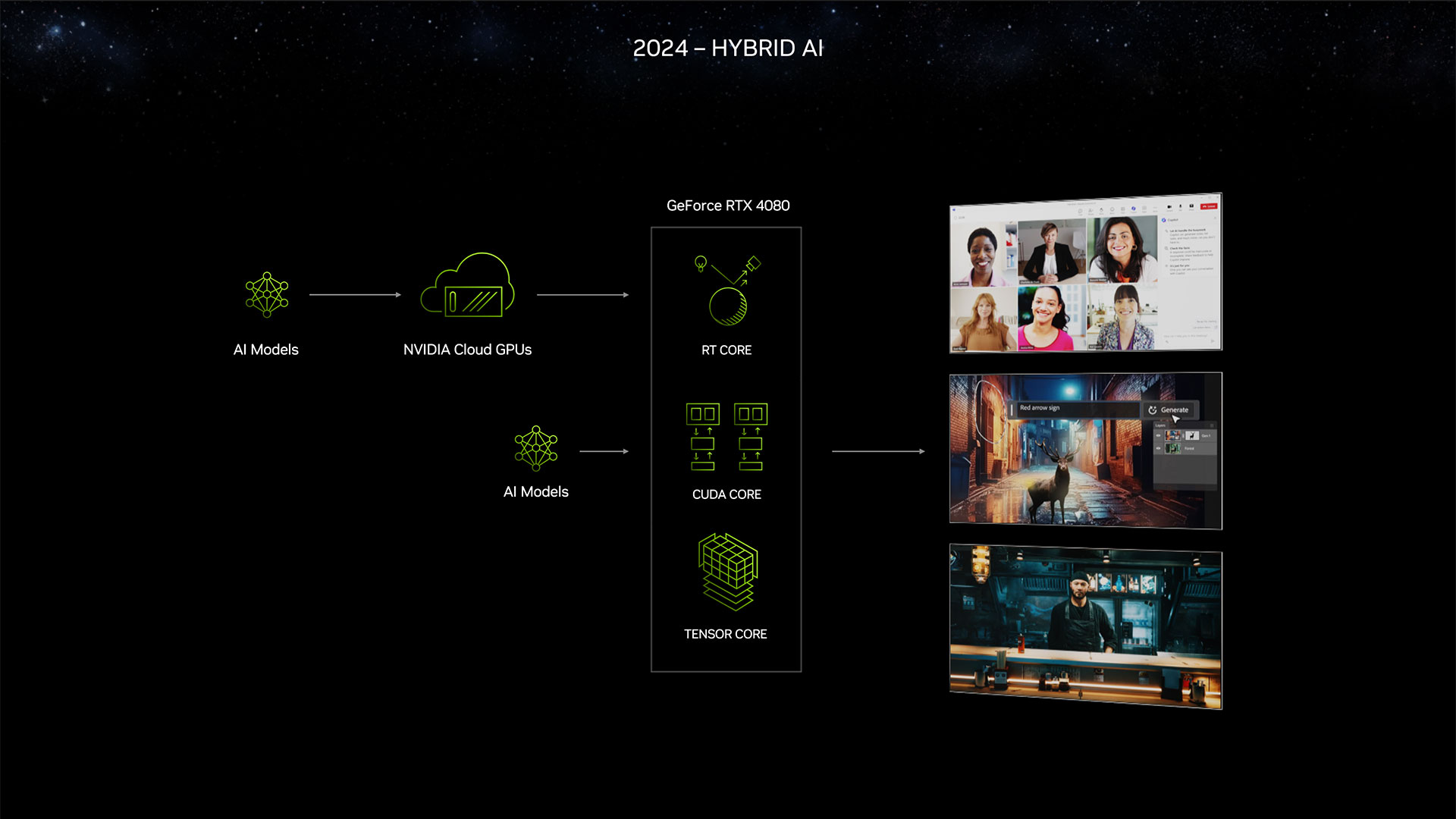
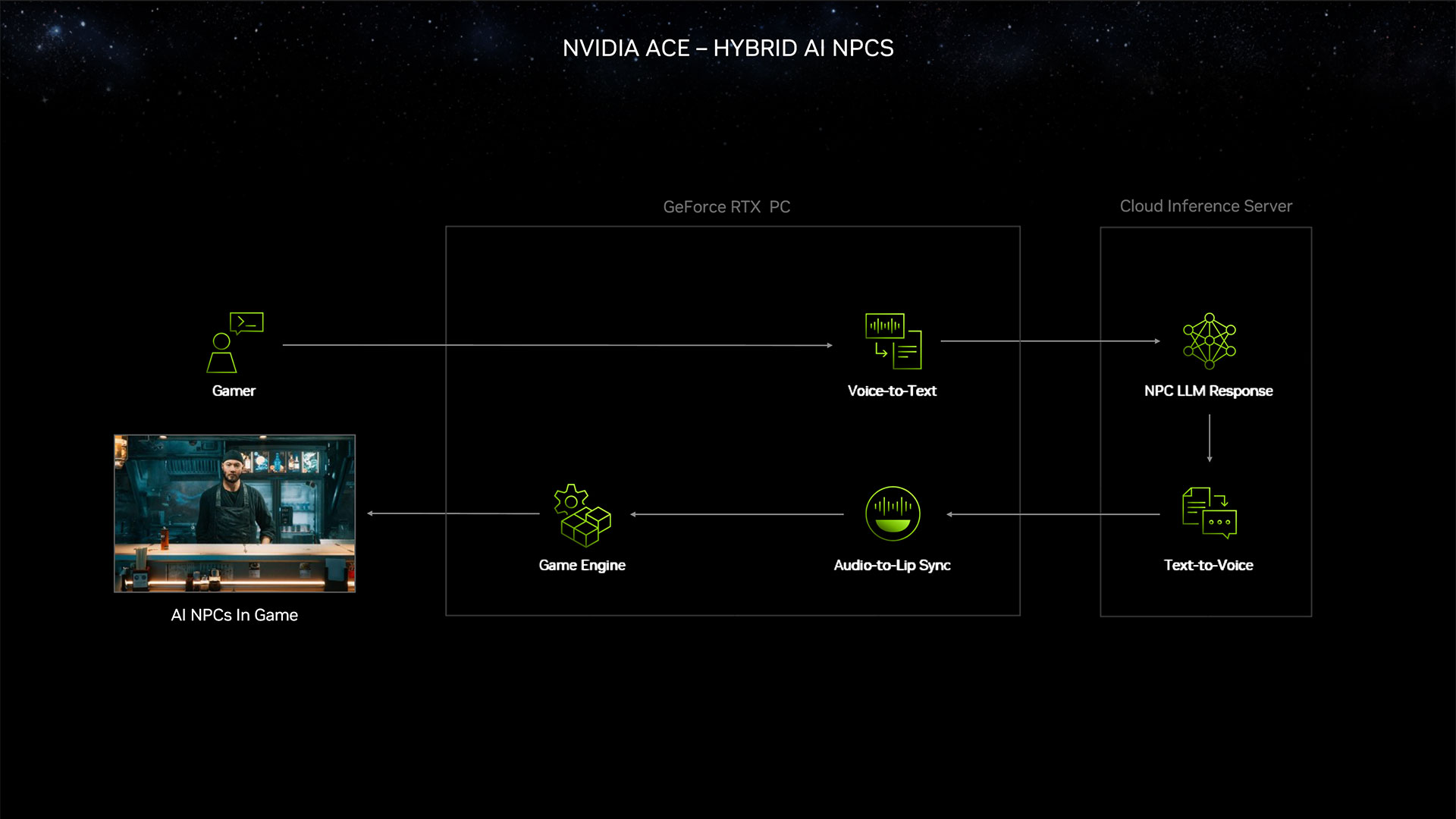
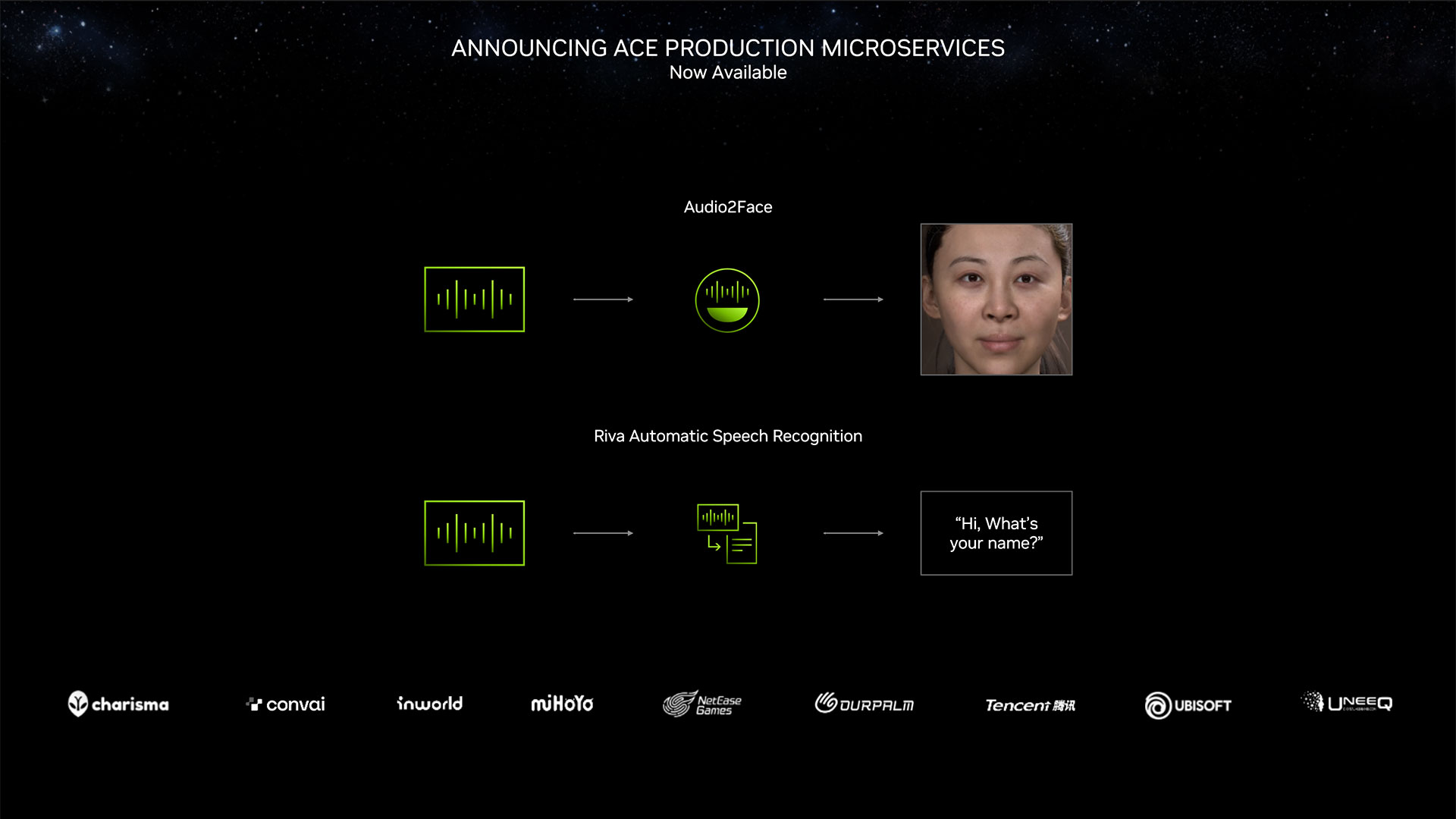

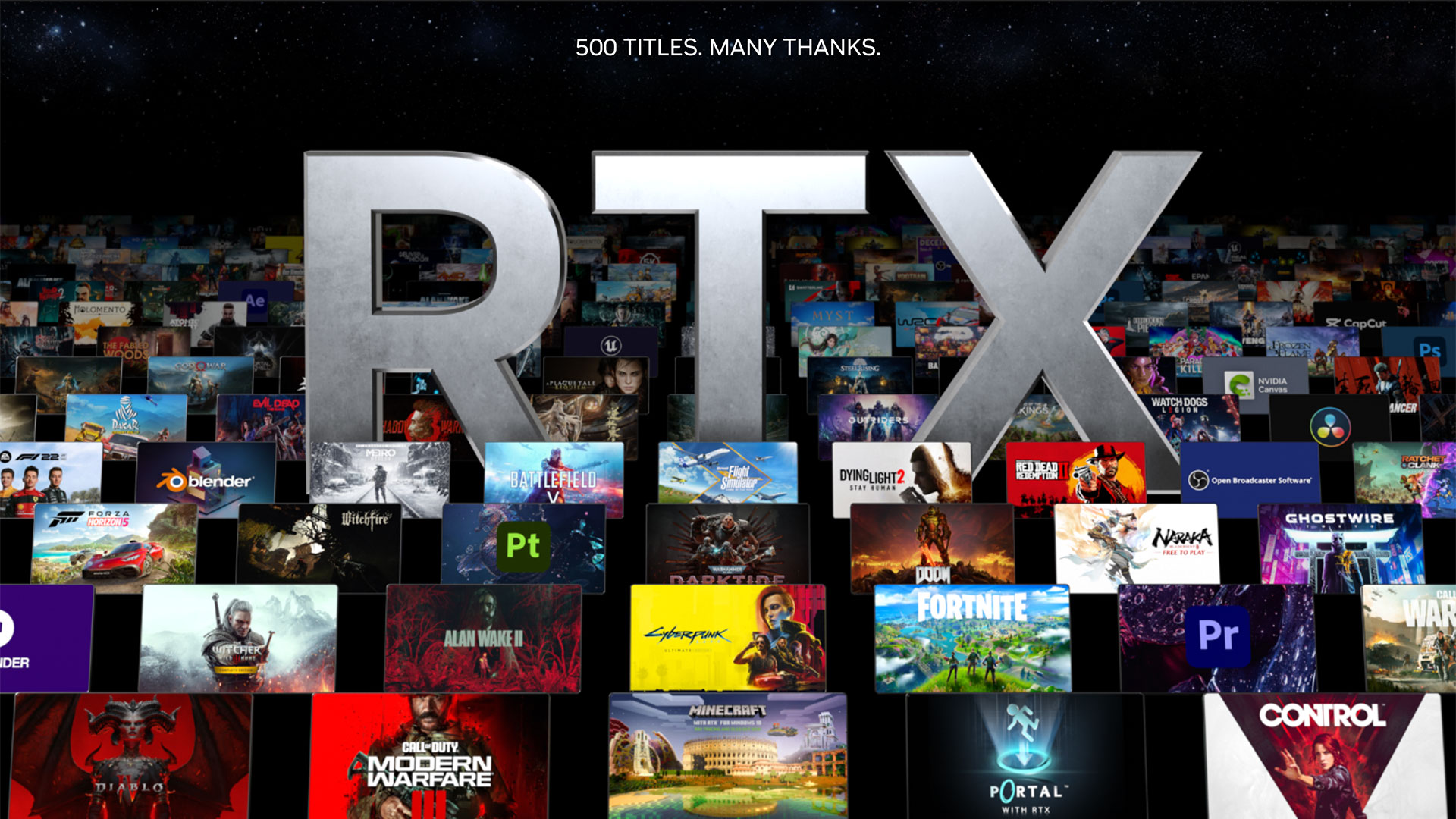
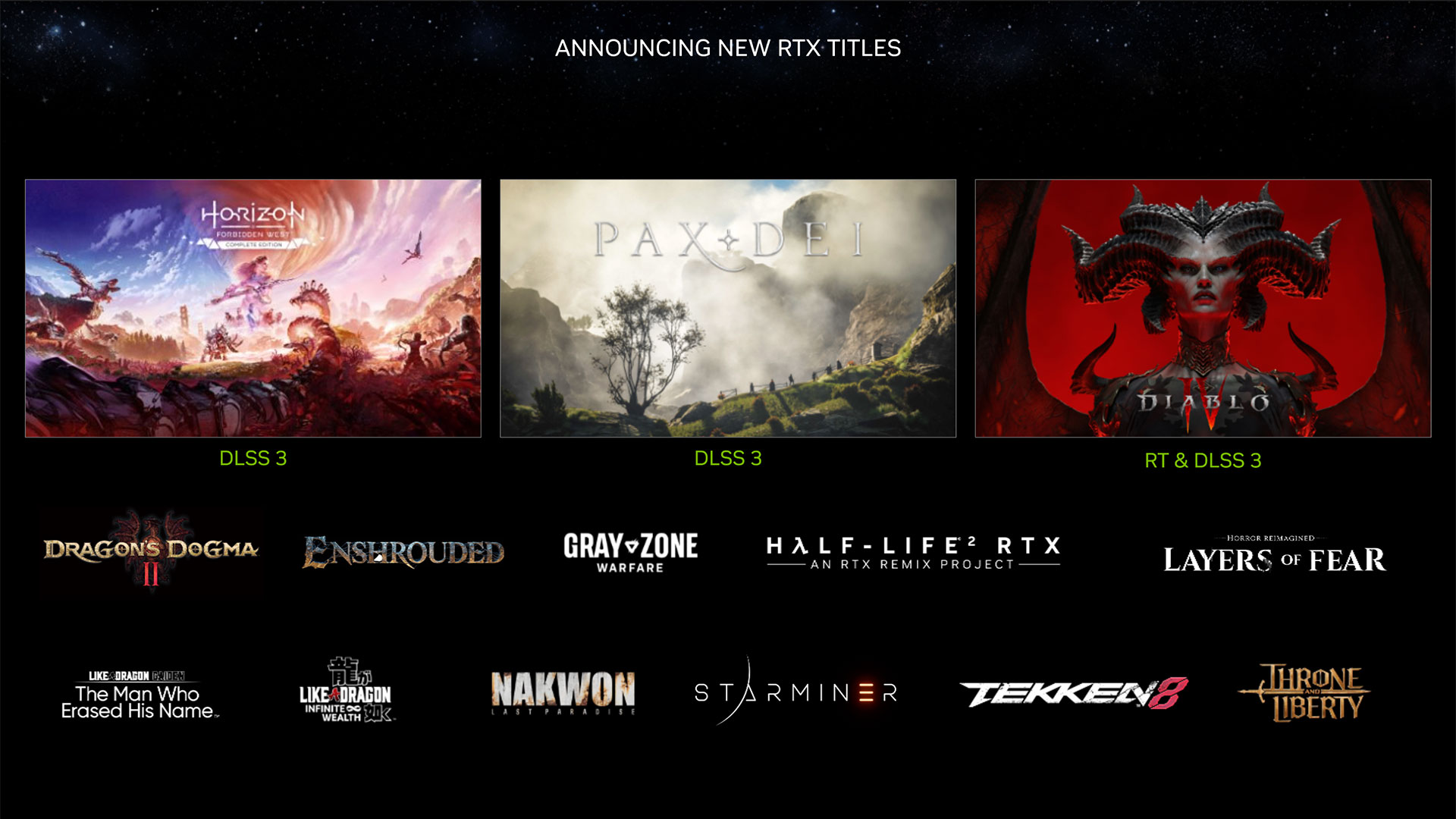

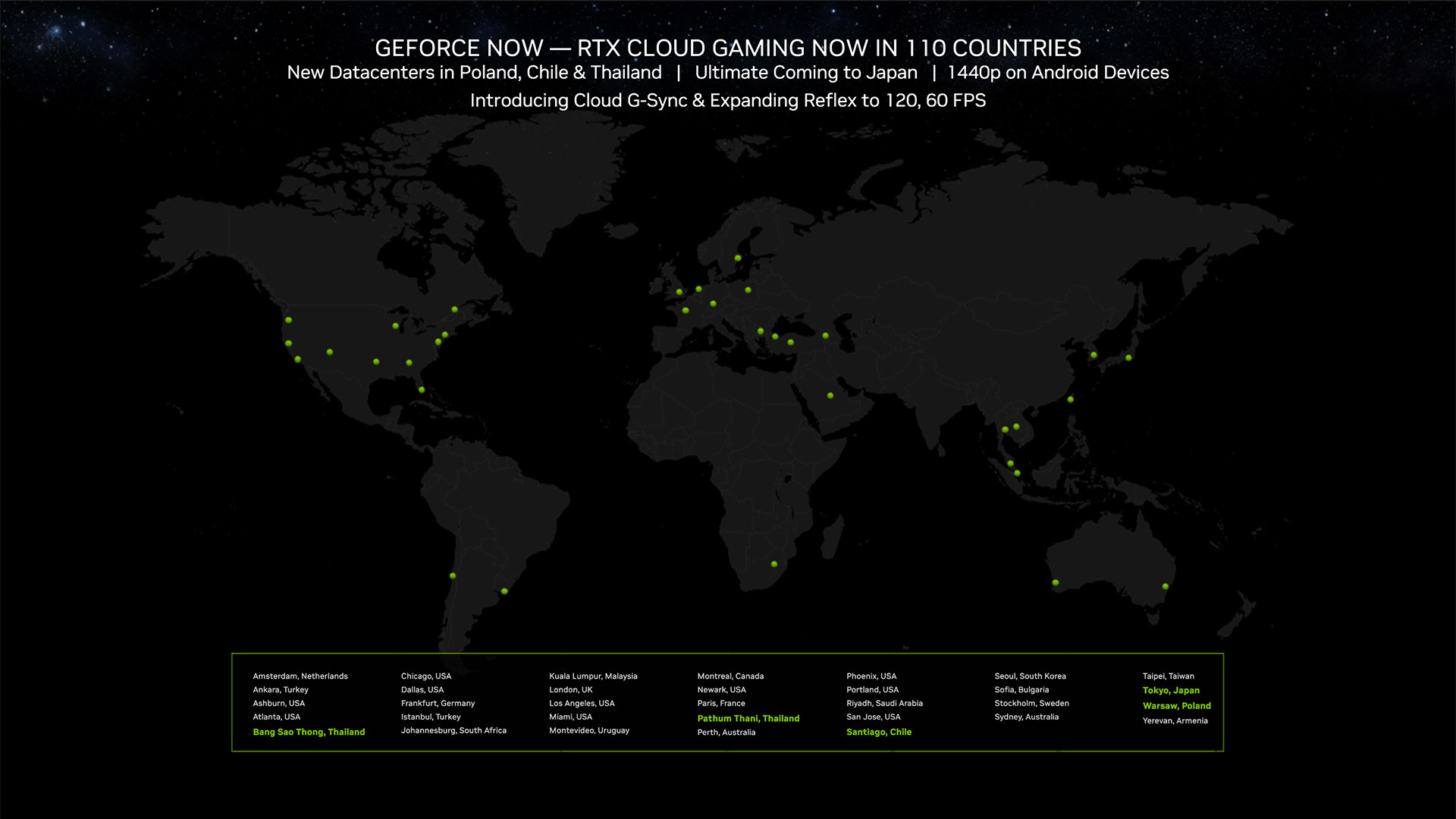

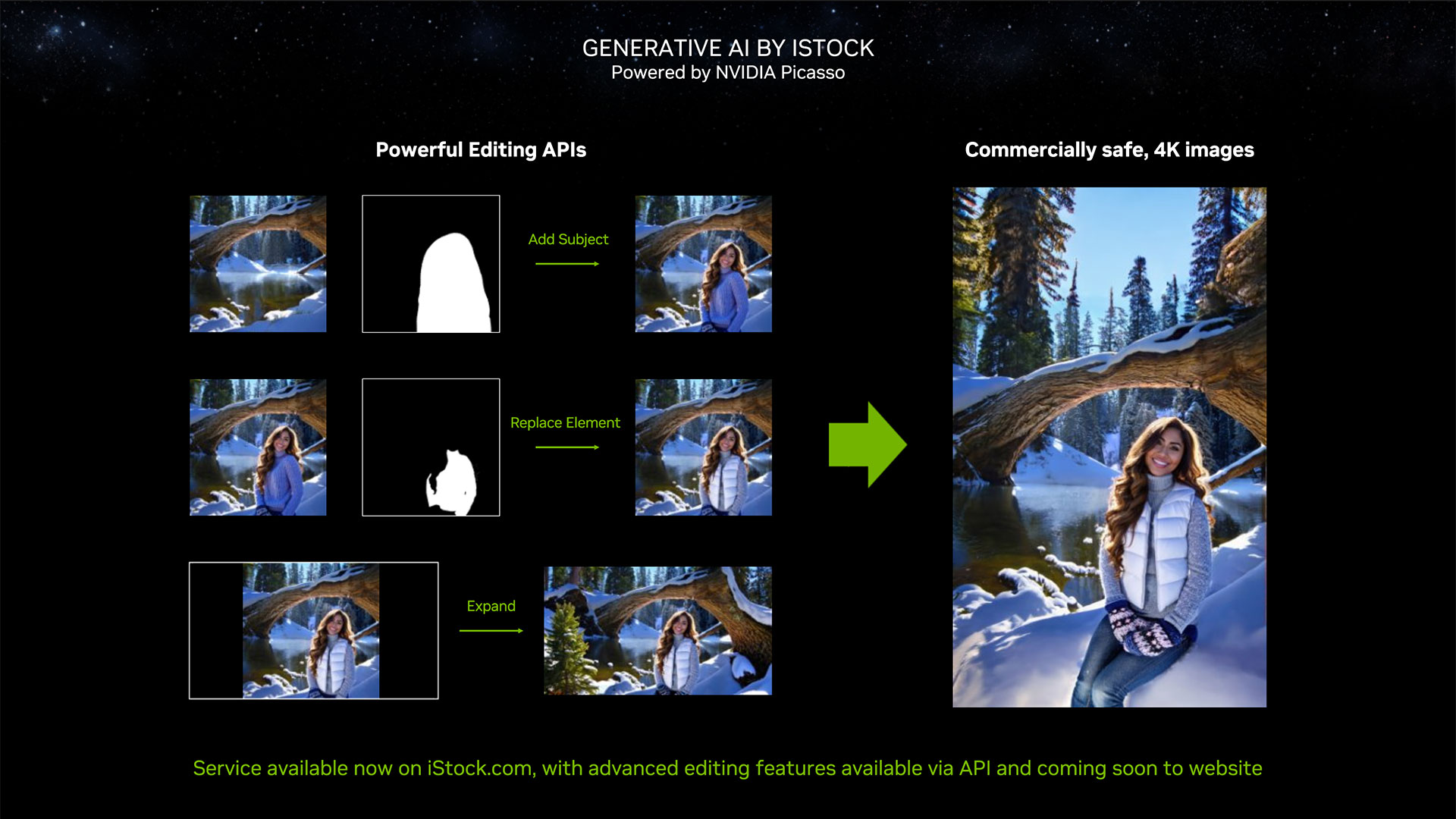
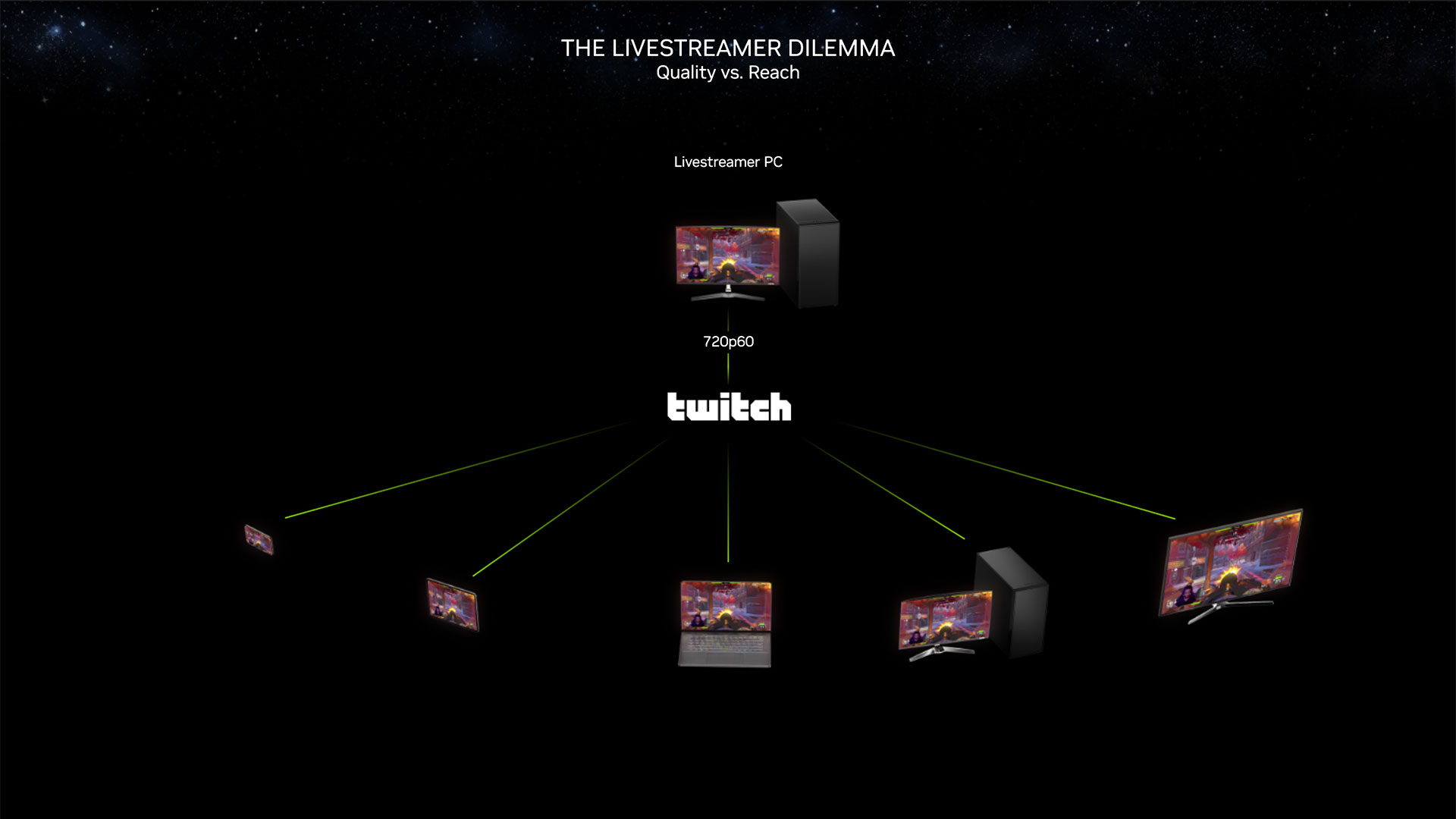
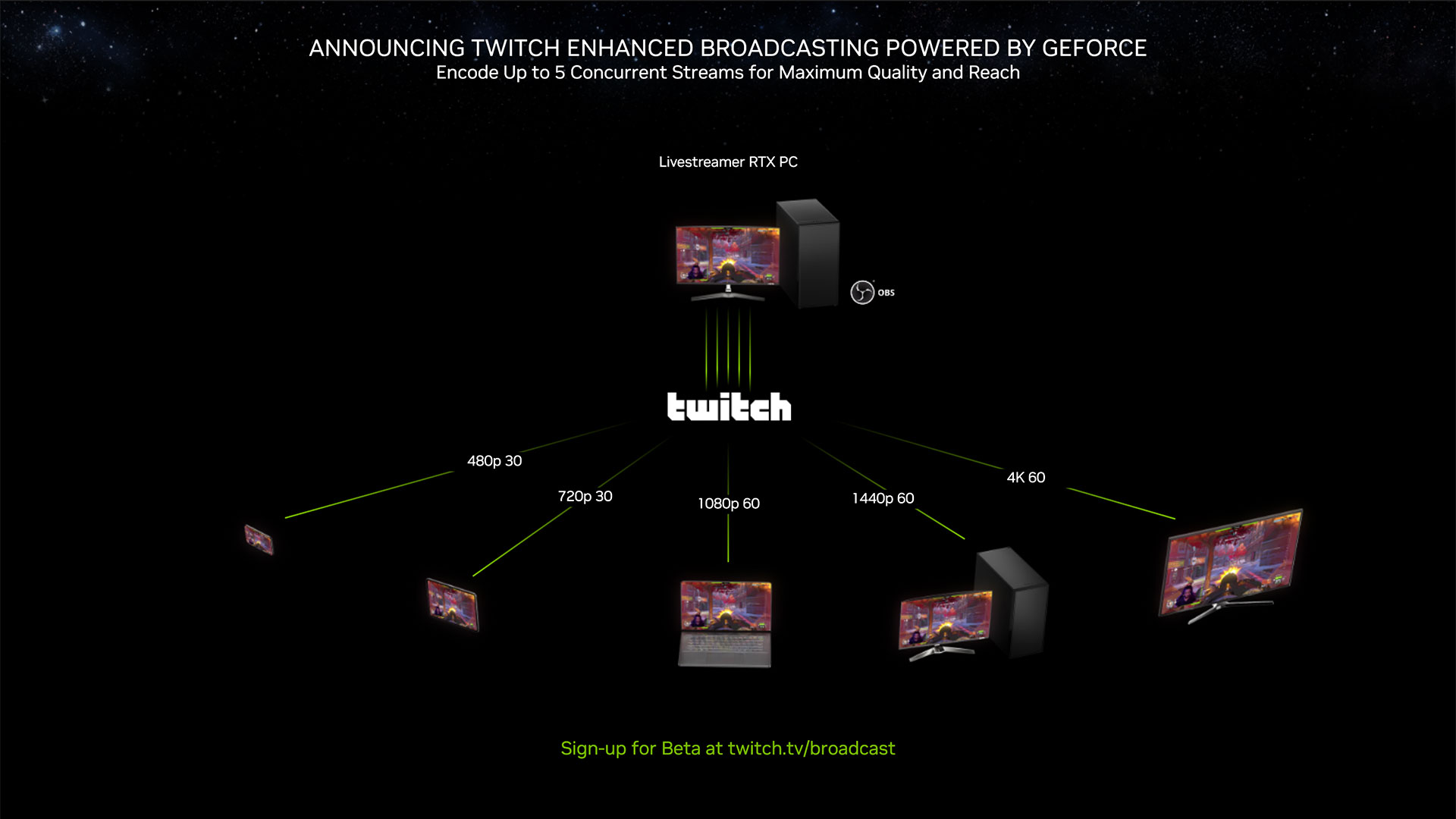
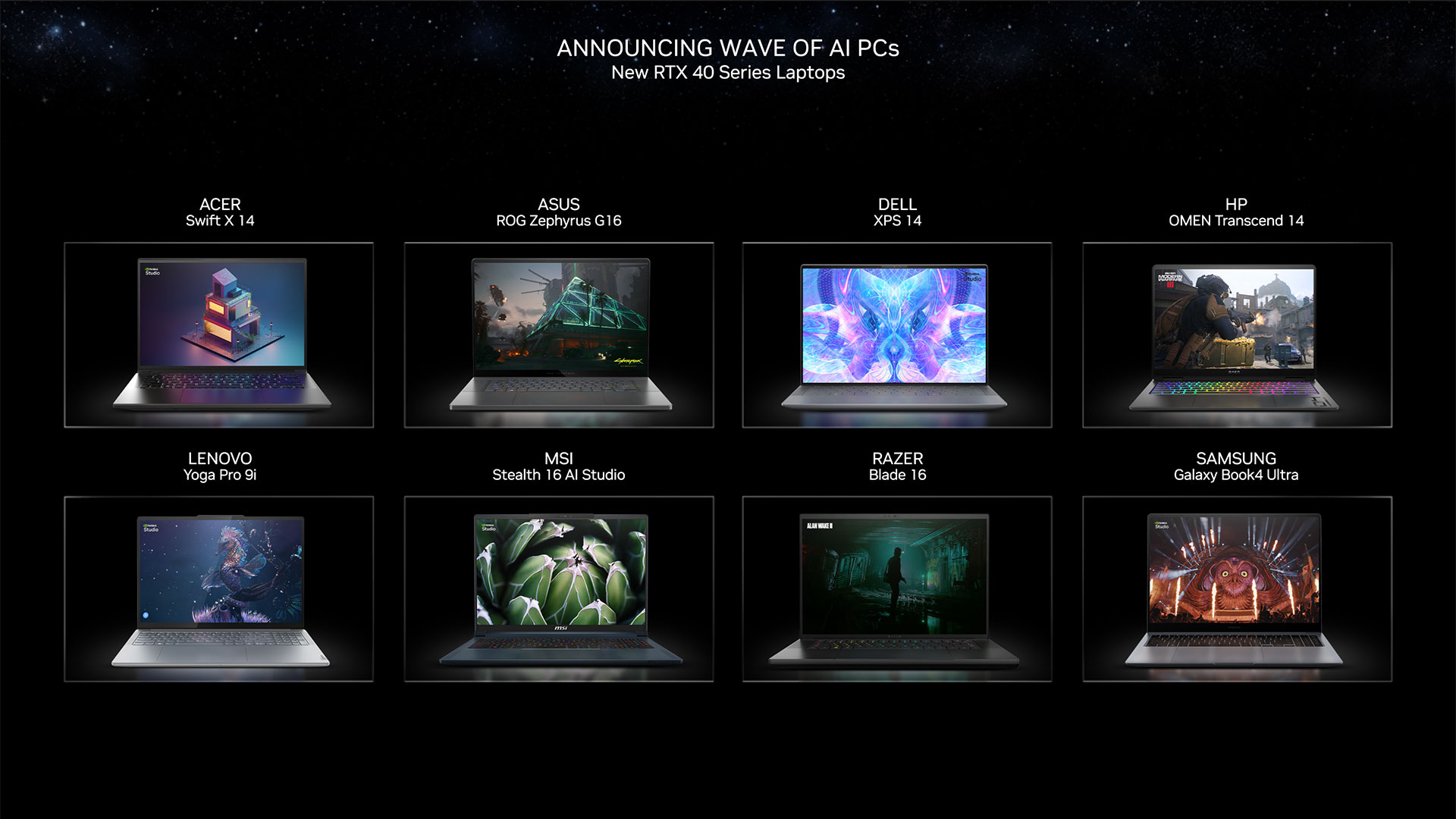
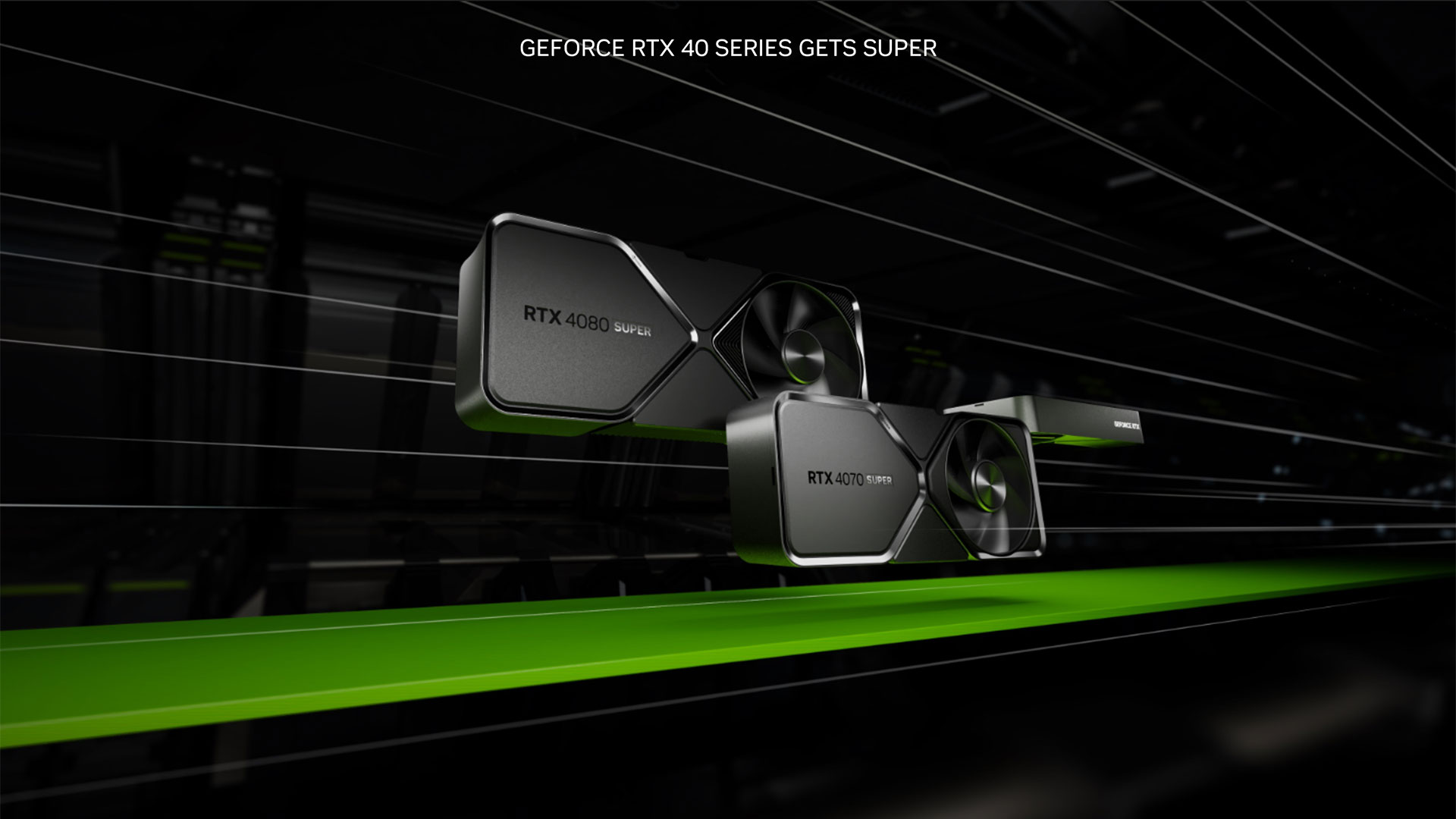














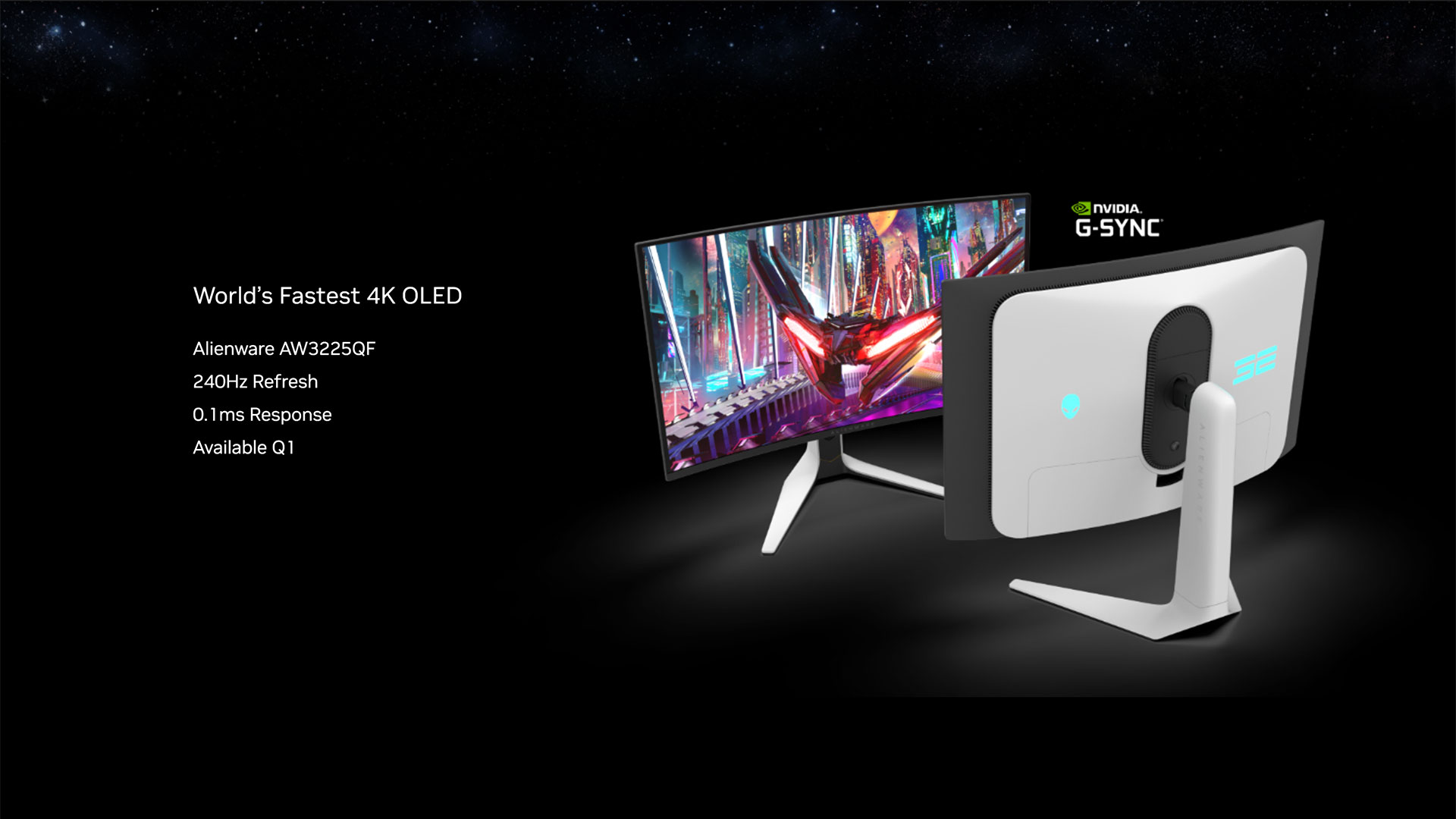

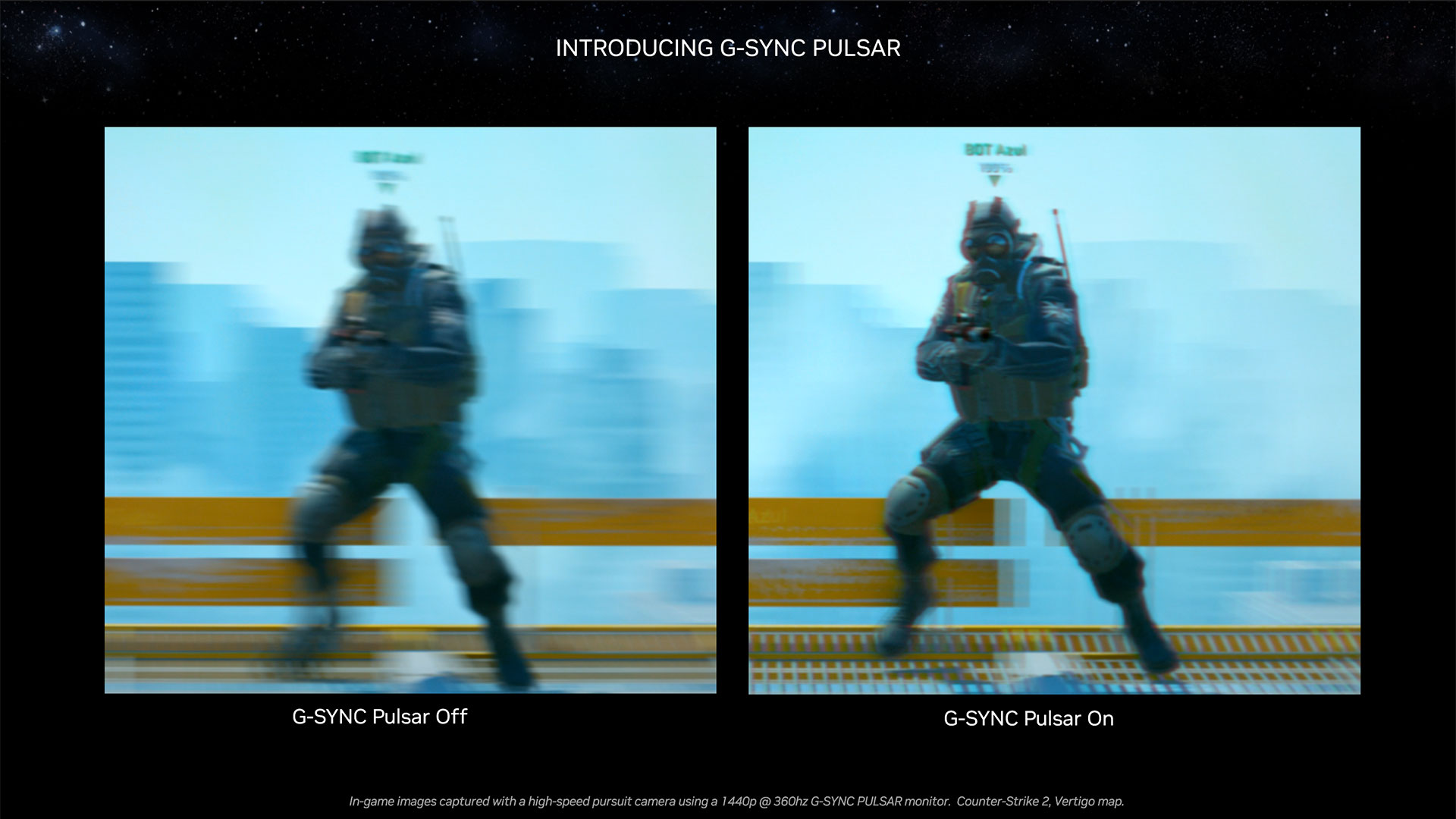
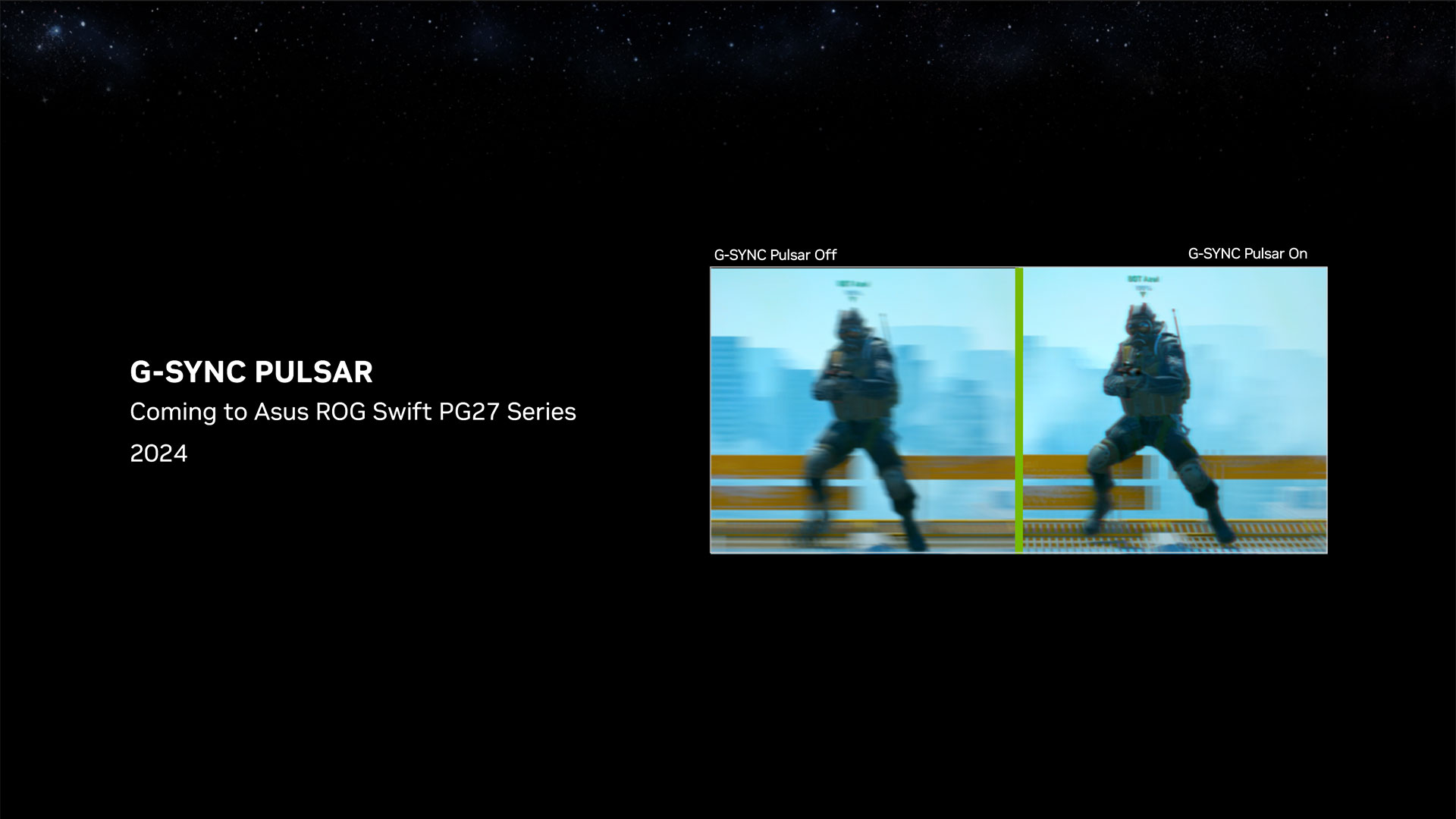
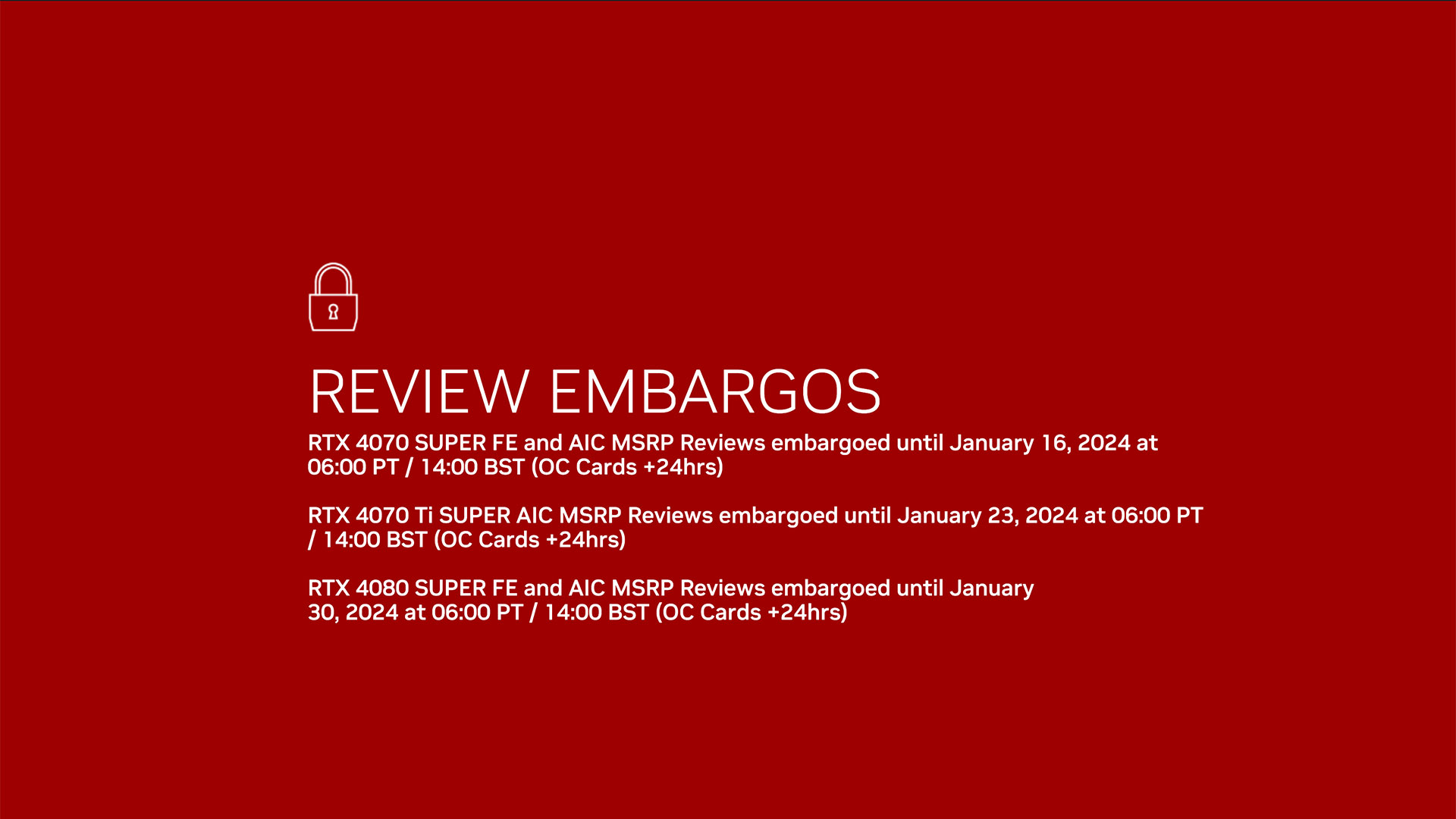


Jarred Walton is a senior editor at Tom's Hardware focusing on everything GPU. He has been working as a tech journalist since 2004, writing for AnandTech, Maximum PC, and PC Gamer. From the first S3 Virge '3D decelerators' to today's GPUs, Jarred keeps up with all the latest graphics trends and is the one to ask about game performance.
-
Iridar51 Assuming 4070 Ti Super is 15% more powerful than 4070 Ti, and 4080 Super is 5% more powerful than 4080, 4080 Super would be about 12% ahead of 4070 Ti for a 25% higher price. Not the worst scaling I've seen, but not drool-inducing either.Reply -
elforeign Reply
Yes indeed, even at $999 the 4080 Super is still overpriced relative to performance scaling gen-on-gen. I would maintain that down the SUPER stack as well.Iridar51 said:Assuming 4070 Ti Super is 15% more powerful than 4070 Ti, and 4080 Super is 5% more powerful than 4080, 4080 Super would be about 12% ahead of 4070 Ti for a 25% higher price. Not the worst scaling I've seen, but not drool-inducing either.
Nvidia is too greedy, and AMD does not/cannot compete well enough to create meaningful price pressure on Nvidia, so here we are. I will give Nvidia a small compliment on the $200 price reduction.
Looking forward to Intel's developments with Battlemage and further, but it may be years before we see a 3080-type moment again. Given supply chain issues and inflation/fab complexity, I would find $799 appropriate for a x80 class processor. -
Iridar51 I'm in a tough spot with this lol. I'm shopping for a new card, and $1000 is about the height of my budget. Before I learned of Supers coming, I flopped between $800 4070 Ti and $1000 7900 XTX, and ultimately decided to go with 4070 Ti due to lower latency while using framegen.Reply
The 4070 Ti Super for the same price and better performance seems like a godsend. Now I just can't decide if I wanna spend more and get 4080 Super instead to go even further beyond, even if it would be less efficient in terms of money/performance.
Guess I'll have to seem some benchmarks while vendors catch up - don't wanna go for Founder's Edition where applicable. -
AgentBirdnest Jarred - an error in your chart, I think? It shows 64MB L2 cache for the 4070 Ti Super, but Nvidia's slide says 48MB.Reply
I'm really looking forward to that card. I had my eye on the regular 4070 or Ti, but have been hesitating, because I want some room to upgrade to a 4K screen this/next year, and am worried those cards could age really quickly at that resolution. Glad I decided to hold off for a couple of months to see what Super brings, because the 4070 Ti Super looks like it would be perfect for me. : ) -
Jagar123 Reply
I saw you comment on another thread that you didn't think AMD had a latency reducing tech when using frame gen. As far as I'm aware Anti Lag works with FSR3 frame gen. If I were you I'd do more investigating before I buy a $800+ dollar GPU.Iridar51 said:Before I learned of Supers coming, I flopped between $800 4070 Ti and $1000 7900 XTX, and ultimately decided to go with 4070 Ti due to lower latency while using framegen. -
bigdragon These new Super cards look like a step in the right direction -- a small step. I'm glad Nvidia didn't create yet another elevated price tier. The 4070 Ti Super is the most interesting option to me...although it is set at nearly the same price I paid for a 3090 in late 2022.Reply -
Iridar51 Reply
I did look into it. As I understand it, Anti Lag is an entirely software solution, and is inferior to Reflex, albeit it does have the advantage of working in all reasonably modern DirectX games.Jagar123 said:I saw you comment on another thread that you didn't think AMD had a latency reducing tech when using frame gen. As far as I'm aware Anti Lag works with FSR3 frame gen. If I were you I'd do more investigating before I buy a $800+ dollar GPU.
Also I just don't like FSR tech in general, in most respects it seems like a helter skelter attempt by AMD to catch up to trends set by nVidia, rather than trying to come up with something of their own.
I'm not fanboying over nVidia, I have a lot of gripes with them actually, but I want the best and I'm fine with paying more to get it. Yes, I'm the average victim of capitalism.
Well, so far they seem to offer a lot of VRAM and slightly better raw rasterization performance at resolutions below 4k. Which is fine, just not something I'm personally interested in as a gamer, because I expect performance-taxing games to have at least some upscaling tech available, and maybe even framegen, and nVidia just wins that hands down.NeoMorpheus said:None of you are interested in buying AMD, no matter what they offer.
AMD might have shot itself in the foot by allowing nVidia cards to take advantage of AMD upscaling / framegen features, particularly when using a mod/patch that allows older RTX cards to combine DLSS upscaling and Reflex latency reduction with AMD framegen.
It was a noble move for sure, but for some nVidia users it means they have fewer reasons for upgrading from their older RTX cards .
The sad reality is that AMD are behind nVidia on the GPU market, not just in raw performance, but in technological presence as well.
Have to give credit where it's due, AMD's 7800X3D looks great for gaming. Despite being an Intel user for over a decade, I'm considering switching to AMD CPU. -
vanadiel007 I am very happy with my 7900XTX and do not regret getting it over the 4080. The XFX version I have is a 4 slot card with a very beefy and capable cooler, and a Z bracket to ensure proper support of the card.Reply
Honestly does everything I need it do to, and more. Should really look at AMD before deciding to go with Nvidia. Adrenalin software package is way ahead of the Nvidia offering. -
doughillman ReplyNeoMorpheus said:We know, people want price pressure on Ngreedia, so they can buy Ngreedia.
None of you are interested in buying AMD, no matter what they offer.
I honestly wish that AMD would just drop from PC gaming GPU's, just to see how much are all of you willing to pay for Ngreedias GPU's.
Then again, we will all be forced to do that anyways, since all of their proprietary tech keeps taking away our options and instead of fighting them, we are demanding it (Starfield DLSS anyone?)
Hahahah! "Ngreedia!" That's soooooo clever and funny! Are you a professional comedian? You certainly should be with a wit like that.
Man. heheheh. Ngreedia. How do you come up with stuff like that? I haven't heard material of that level since like, the third grade playground.
Kudos. Kudos. -
saunupe1911 I'm having a real hard time understanding the point of these.Reply
It's seems like an excuse to make a minor modification in the manufacturing process to keep the particular plants going. It's like they are releasing these just because they can.
